
- Find A School
- Certifications
- North U Sail Trim
- Inside Sailing with Peter Isler
- Docking Made Easy
- Study Quizzes
- Bite-sized Lessons
- Fun Quizzes
- Sailing Challenge
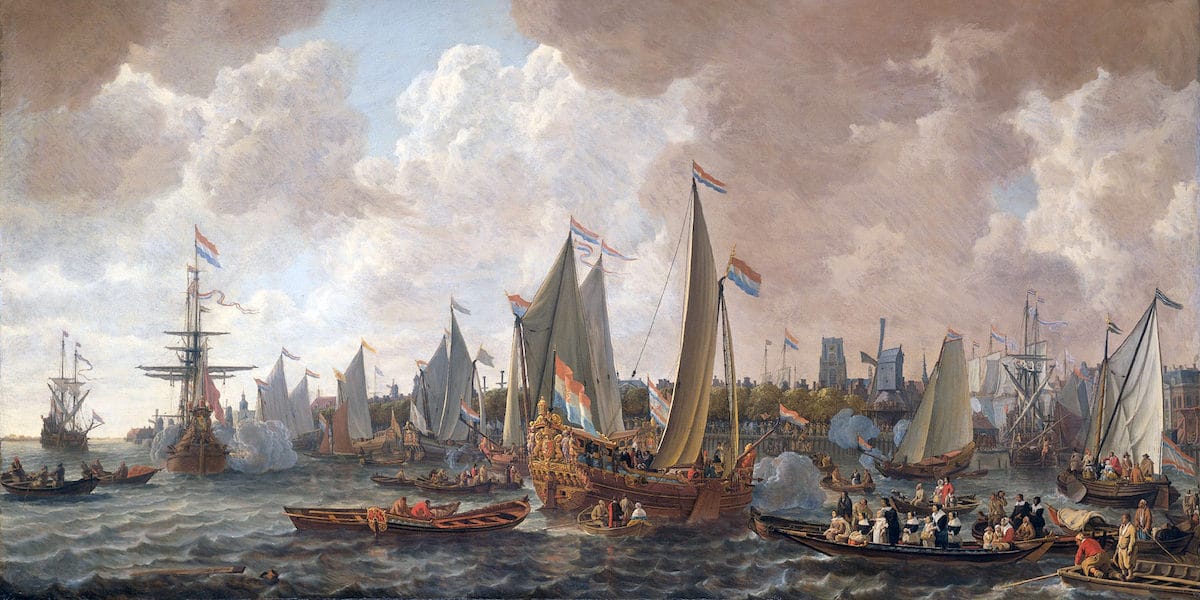

History of the Yacht
By: American Sailing Sailing History
When does a boat become a yacht? One answer has always been, you can tell a yacht when you see one. But, It really has nothing to do with size of the boat, weight of the boat, its style, sleeping quarters, heads, tillers, or a wheel. A yacht is a boat that was designed for the express pleasure of its owner.
The yacht is an invention of the 14th century Dutch. The Dutch used small, fast boats for chasing smugglers, pirates and criminals. Rich ship owners and merchants began using these small “ jaghts ” to sail out to celebrate their returning merchant ships. It quickly became chic to use these “ jaghts ” to take friends out just for pleasure.

“ Mary ” was presented to King Charles II by the Dutch in 1660.
Charles II of England spent 10 years in exile in Holland before he was returned to the English throne in 1660. His return to the throne was celebrated by the city of Amsterdam, presenting him with a luxurious 60’ yacht including a crew of 20. Her name was Mary. He took great pleasure in sailing her up and down the Thames. He studied navigation and even naval architecture and he built approximately 20 yachts during his lifetime. It can be said that he was the world’s first yachtsman. His enthusiasm for yachting was contagious and his brother James, Duke of York, joined him and also became an avid yachtsman as well.
As always when there are two sailboats on the water a race ensues. Soon the first organized regatta was planned as a 40-mile race on the Thames. It took place in 1661 between Katherine , Charles’s newly constructed yacht and Anne , the Duke of York’s new yacht with Charles himself at the helm Katherine won and a new sport was born.
Yachting stayed the Sport of Kings for over a century, but by the 1800s yachting had grown to included participants of more than just the crown heads of Europe. The worlds wealthiest had joined in. Yacht Clubs were forming. The first yacht club in the world, called the Cork Water Club , was established in Ireland in 1720, followed the Lough Ree Yacht Club in 1770 (again in Ireland), and the Starcross Yacht Club in 1772 in England.

Cowes Castle became the headquarters of the Royal Yacht Squadron around 1858.
Probably the most famous of all the English yacht clubs the The Royal Yacht Squadron was founded on June 1, 1815 in the Thatched House Tavern in St James’s, London as The Yacht Club by 42 gentlemen interested in yachting.
Across the pond the New York Yacht Club (NYYC) was started on July 30, 1844 when John Cox Stevens invited eight friends to his yacht Gimcrack , anchored in New York Harbor. They formed a syndicate to build a yacht with the intention of taking her to England and making some money competing in yachting regattas and match races. They choose to build a Pilot style Schooner to represent the club; at the time there was no faster design!
Pilot Schooners would lie at anchor in the inner harbor of New York City and wait for the behmoth square rigged Clippers carrying goods between America and Europe. The Pilot Boats purpose was to guide the huge square riggers that would appear at the entrance to New York Harbor’s Verazno Straights, to a berth in the City. The Schooners had to be fast to make a living. First one to the cargo ship got the job second got nothing.
The syndicate contracted with master schooner designer George Steers for a 101 ft (30.78 m) schooner which was christened America and launched on the 3 of May 1851. America crossed the Atlantic on her own bottom that year and challenged all of England’s fastest yachts to a match race. No yachts were willing to race her. Finally, America joined a free-for-all on Friday, August 22, around the Isle of Wight, racing against 15 yachts of the Royal Yacht Squadron in the club’s annual 53-nautical-mile (98 km) race around the Isle of Wight. Finishing 8 minutes ahead of its closest rival. America had won the Royal Yacht Squadron’s “ Hundred Guinea Cup “, later called the America’s Cup in honor of the yacht that won it.

The Yacht America
Watching the race was Queen Victoria, who supposedly inquired, “ Which is first? ” Told it was America , she asked, “ Which is second? ” “ Ah, Your Majesty, there is no second, ” was the reply. Or so the story goes. The NYYC defended that trophy from 1870-1983. This has been described by journalists as “ the longest winning streak in sports “.
Related Posts:

- Learn To Sail
- Mobile Apps
- Online Courses
- Upcoming Courses
- Sailor Resources
- ASA Log Book
- Bite Sized Lessons
- Knots Made Easy
- Catamaran Challenge
- Sailing Vacations
- Sailing Cruises
- Charter Resources
- International Proficiency Certificate
- Find A Charter
- All Articles
- Sailing Tips
- Sailing Terms
- Destinations
- Environmental
- Initiatives
- Instructor Resources
- Become An Instructor
- Become An ASA School
- Member / Instructor Login
- Affiliate Login
- Mar 2, 2023
The History of Yachting: From Ancient Times to the Modern Era
Yachting is a popular and luxurious activity enjoyed by many around the world. The history of yachting dates back to ancient times, and over the centuries, it has evolved into the modern-day sport and pastime that we know today. In this article, we will take a closer look at the history of yachting and how it has evolved over the years.
Ancient Times
Yachting can be traced back to ancient times, where it was primarily used for transportation and fishing. The ancient Egyptians and Phoenicians used small boats to transport goods, while the Greeks and Romans used larger ships for naval battles and exploration. The Vikings also used boats to travel and explore new lands.
16th and 17th Centuries
During the 16th and 17th centuries, yachting began to emerge as a recreational activity for the wealthy. The first recorded yacht race took place in England in 1661, where King Charles II raced his yacht against the Duke of York. Yachts during this time were small and were typically used for short pleasure cruises.
18th and 19th Centuries
In the 18th and 19th centuries, yachting became more popular, and yachts began to evolve into larger and more luxurious vessels. During this time, the America's Cup was established, which is still one of the most prestigious yachting races in the world. Yachts during this time were often used by royalty and the wealthy for leisurely cruises, and yacht clubs began to emerge as social clubs for yachting enthusiasts.
20th Century and Modern Era
In the 20th century, yachting continued to grow in popularity, and yachts became even more advanced and luxurious. The development of new materials, such as fiberglass and carbon fiber, revolutionized yacht design, making yachts faster and more comfortable. Today, yachting is a multi-billion dollar industry, with yachts ranging from small sailboats to massive mega yachts that can cost hundreds of millions of dollars.
Yachting has also become more accessible to the general public, with yacht charters and rentals available in many popular yachting destinations. Yachting is no longer limited to the wealthy and has become a popular pastime for people from all walks of life.
In conclusion, yachting has a rich history that dates back to ancient times. From transportation and fishing to recreation and leisure, yachting has evolved into the modern-day sport and pastime that we know today. With its luxurious vessels and breathtaking destinations, yachting continues to capture the hearts of people around the world.
- TBZ Daily Skipper's Blog
Recent Posts
Your Guide to Finding the Perfect Boat at a Boat Show
If you're new to boating, stepping into a boat show can be an exhilarating experience. The glittering vessels of all shapes and sizes, the smell of the sea, and the promise of adventures on the water
Boating Accidents: causes and how to avoid them!
Boating is a fun and exciting activity that many people enjoy. Whether you're out on the lake for a leisurely afternoon or cruising along the coast, there are certain safety precautions you should tak
Anchoring in Windy Conditions
As a seasoned boater, you know that anchoring your yacht properly is essential to keeping your vessel secure and avoiding any unnecessary damages. However, when you encounter windy conditions, anchori

- RIVIERA YACHTS
- BELIZE YACHTS
- DESIGN AND BUILD
- YACHT MANAGEMENT
- SUPERYACHT PROJECTS
- PRE-OWNED YACHTS
- NEWS & PR
- LEE MARINE TEAM
- COMPANY NEWSLETTERS
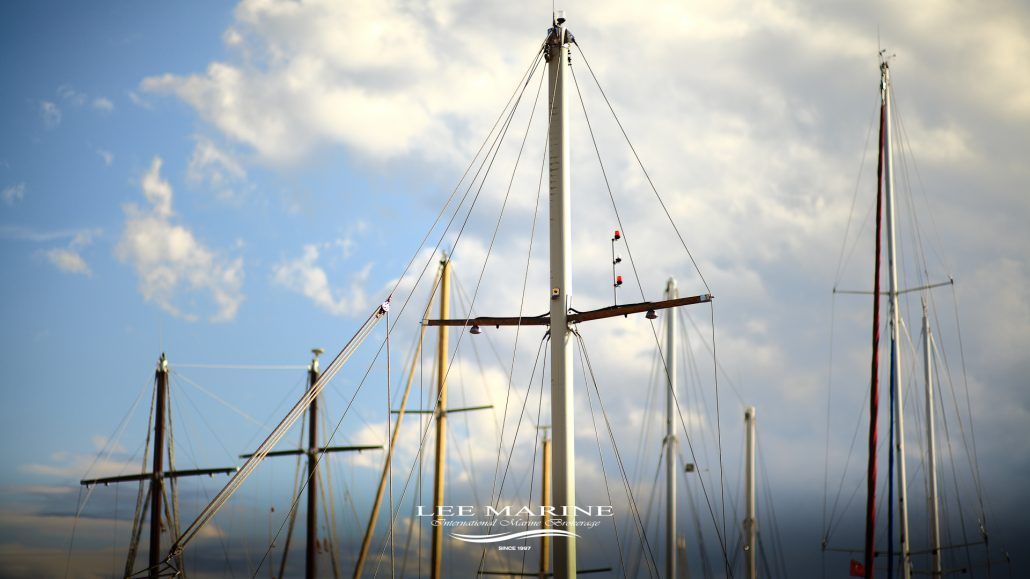
A Chronological History of Yachting, From Sailboats to MegaYachts
The allure of the open sea has captivated human imagination for centuries, and yachting stands as a testament to our enduring quest for adventure and luxury. From humble sailboats to extravagant megayachts, the history of yachting is a fascinating journey that mirrors the evolution of maritime technology, design, and societal trends.
A deep dive into the history of yachting
The roots of yachting can be traced back to ancient civilizations. The Egyptians and Phoenicians were among the first to use sailboats for leisure, employing them for recreational excursions rather than purely utilitarian purposes. As maritime exploration gained prominence, so did the idea of sailing for pleasure.
The Renaissance era
During the Renaissance, European nobility embraced yachting as a symbol of prestige and opulence. Elaborate galleons adorned with ornate carvings and luxurious furnishings became the playthings of kings and queens. Yachting evolved from a pastime of necessity to an expression of wealth and social standing.
The Golden Age in yachting history
The 17th and 18th centuries marked the Golden Age of Sailing, and racing became a popular pastime among the European elite. The sport of yacht racing was born, characterized by sleek and nimble vessels that competed for glory on the open water . The development of racing rules and the formalization of yacht clubs laid the foundation for organized yachting as we know it today.
Innovation and industrialization
The 19th century witnessed significant advancements in yacht design and construction. The shift from wood to iron and eventually steel allowed for larger and more seaworthy vessels. The advent of steam power revolutionized yachting, enabling vessels to navigate waters with or without wind. Pioneering designers like Nathanael Herreshoff and William Fife introduced innovations that improved both performance and aesthetics.
The America’s Cup and its impact on competitive yachting
The late 19th century also saw the establishment of the America’s Cup, the oldest international sporting trophy. This prestigious race, initiated in 1851, has been a driving force for yacht design and technology. The constant quest for speed and innovation in the America’s Cup has consistently pushed the boundaries of yachting.
The rise of motors: Yachting history is forever changed
The early 20th century witnessed the rise of motor yachts , as internal combustion engines became more reliable and accessible. Wealthy industrialists and celebrities embraced the newfound freedom and comfort offered by motorized vessels. Yachting transitioned from a pursuit primarily for the elite to a more accessible luxury .
Beyond World War II and the megayacht era
After World War II, the yachting landscape underwent a profound transformation. Advances in materials, propulsion systems, and navigation technology led to the development of megayachts—large, opulent vessels designed for maximum comfort and luxury. The iconic Christina O, once owned by Aristotle Onassis, epitomized this era of yachting extravagance.
Technological advancements
The latter part of the 20th century and the early 21st century saw rapid technological advancements in yachting. Computer-aided design (CAD), lightweight materials, and innovative hull designs improved performance and fuel efficiency. The integration of cutting-edge navigation systems and communication technologies enhanced safety and convenience on board.
Environmental awareness and sustainable yachting
In recent history, the yachting industry has faced increased scrutiny regarding its environmental impact . As a response, there is a growing emphasis on sustainability and eco-friendly practices. Hybrid propulsion systems, solar panels, and waste reduction initiatives are becoming integral to modern yacht design, reflecting a broader global awareness of environmental conservation .
From the humble beginnings of sailboats to the extravagant megayachts of today, the history of yachting is a captivating voyage through time. It mirrors the evolution of technology, societal values, and the human desire for exploration and luxury. Whether under full sail or cruising with the power of cutting-edge engines, yachting remains a symbol of freedom, adventure, and the timeless pursuit of the horizon.
Privacy Overview
| Cookie | Duration | Description |
|---|---|---|
| cookielawinfo-checkbox-analytics | 11 months | This cookie is set by GDPR Cookie Consent plugin. The cookie is used to store the user consent for the cookies in the category "Analytics". |
| cookielawinfo-checkbox-functional | 11 months | The cookie is set by GDPR cookie consent to record the user consent for the cookies in the category "Functional". |
| cookielawinfo-checkbox-necessary | 11 months | This cookie is set by GDPR Cookie Consent plugin. The cookies is used to store the user consent for the cookies in the category "Necessary". |
| cookielawinfo-checkbox-others | 11 months | This cookie is set by GDPR Cookie Consent plugin. The cookie is used to store the user consent for the cookies in the category "Other. |
| cookielawinfo-checkbox-performance | 11 months | This cookie is set by GDPR Cookie Consent plugin. The cookie is used to store the user consent for the cookies in the category "Performance". |
| viewed_cookie_policy | 11 months | The cookie is set by the GDPR Cookie Consent plugin and is used to store whether or not user has consented to the use of cookies. It does not store any personal data. |
The Fascinating World of Yacht Archaeology: Discoveries and Explorations
- by yachtman
- September 26, 2023 June 22, 2024
The world of yacht archaeology is a captivating realm that unveils the mysteries of ancient seafaring and maritime history. Yacht archaeology focuses on the study of historical yachts and the exploration of their remains, shedding light on the evolution of yachting and its place in human civilization. It offers a unique perspective on the fascinating history of seafaring cultures and their technological advancements.
Yacht archaeology encompasses various aspects, including the origins and development of yachting, methods and techniques used in underwater excavation, documentation, and preservation of yacht-related artifacts. Through these archaeological methods, remarkable discoveries have been made, ranging from historic shipwrecks to ancient yachting cultures that reveal insights into the lifestyles and trade routes of the past.
Explorations in yacht archaeology take researchers to unexplored regions and foster collaborative projects and partnerships that bring together experts from various fields. These endeavors enable the discovery of new sites, the retrieval of valuable artifacts, and the preservation of maritime heritage for the benefit of future generations.
The significance of yacht archaeology extends beyond the pursuit of knowledge. It plays a vital role in advancing historical understanding by piecing together the puzzle of our seafaring past. it contributes to conserving and protecting maritime heritage, ensuring that the significance of these cultural treasures is recognized and preserved.
Through the exciting world of yacht archaeology, we can unravel the stories of our seafaring ancestors and gain a deeper appreciation for the rich maritime history that has shaped our world.
Key takeaway:
- The fascinating world of yacht archaeology uncovers historic shipwrecks and ancient yachting cultures, providing valuable insights into the history of yachting.
- Yacht archaeology utilizes methods such as underwater excavation and documentation to preserve maritime heritage and advance historical knowledge.
- Explorations in yacht archaeology involve expeditions to unexplored regions and collaborative projects, fostering partnerships for the conservation and protection of maritime heritage.
The Fascinating World of Yacht Archaeology
Yacht archaeology is a captivating field that delves into the fascinating world of maritime history and the exploration of sunken vessels. This unique area of study utilizes scientific techniques to uncover and analyze ancient shipwrecks, providing invaluable insights into past civilizations and their seafaring practices.
Active underwater exploration methods, including remote sensing and diver surveys, are employed to locate and document these submerged artifacts. Meticulous excavation and preservation processes allow researchers to recover and study a wide range of artifacts, from pottery and tools to navigational instruments and even shipwrecked remains.
The findings from yacht archaeology not only shed light on the historical significance of these vessels but also contribute to our understanding of human evolution and cultural development. By examining ship designs, cargo, and construction techniques, experts are able to establish connections between different civilizations and trace the evolution of maritime technology.
The work of yacht archaeologists is fascinating and essential in preserving our collective history. Through the utilization of advanced imaging technologies and thorough analysis, archaeologists can reconstruct and conserve these shipwrecks, ensuring that future generations can appreciate and learn from them.
Yacht archaeologists play a crucial role in deepening our knowledge of ancient trade routes, economic systems, and maritime skills. They foster a greater appreciation for the interconnection of civilizations and the profound impact of seafaring on the development of human societies.
What is Yacht Archaeology?
Yacht archaeology, also known as underwater archaeology , is the study of submerged shipwrecks and other archaeological sites that lie beneath the water’s surface. It involves the exploration and excavation of these sites to uncover historical artifacts and gain insights into the past. The field of yacht archaeology combines the expertise of marine archaeologists, divers, and technology to investigate and document these underwater treasures.
In recent years, the field of yacht archaeology has seen significant advancements. Innovative tools, such as sonar scanning and underwater drones , have revolutionized the way researchers explore and map underwater sites. These technologies enable researchers to identify and inventory shipwrecks without physically disturbing them. By analyzing the artifacts recovered from these wrecks, archaeologists can piece together the history and cultural significance of these ancient vessels.
A remarkable story from the world of yacht archaeology involves the discovery of the Antikythera mechanism . In 1900, a Greek sponge diver stumbled upon a shipwreck off the coast of the island of Antikythera. Among the artifacts recovered from the wreck was a corroded bronze device. Decades later, with the help of advanced imaging techniques, archaeologists realized the true significance of this object.
The device turned out to be an ancient analog computer, capable of predicting astronomical positions and eclipses. This discovery shed light on the advanced technology and scientific knowledge of the ancient Greeks. The Antikythera mechanism is now considered one of the most important archaeological finds of the 20th century, fascinating researchers and historians in the field of yacht archaeology.
Yacht archaeology is a captivating field that uncovers hidden treasures beneath the sea. Researchers explore shipwrecks and underwater sites to piece together the history and cultural significance of these artifacts. The advancement of technology has greatly enhanced our understanding of these underwater worlds, leading to remarkable discoveries like the Antikythera mechanism.
The History of Yachting
Step aboard as we explore the captivating history of yachting, unearthing the origins and witnessing the evolution of these magnificent vessels. From the humble beginnings of yachting to groundbreaking advancements, we’ll embark on a voyage to understand how yachts have shaped the world of maritime exploration. Brace yourself for revelations and fascinating tales of seafaring adventures that await in this journey through the enthralling history of yachting.
Origins of Yachting
The origins of yachting can be traced back to ancient civilizations where boats were used for various purposes, including transportation, trade, and fishing. It was during the 17th century in Europe that yachting as a leisure activity began to emerge.
1. Rich nobility: The origins of yachting reveal its aristocratic beginnings as it initially became popular among the wealthy nobility who sought new ways to enjoy their leisure time. The wealthy European aristocrats would organize private sailing races, showcasing their opulent and extravagant lifestyles.
2. Royal involvement: The origins of yachting gained further prominence when royal families started to show interest in the sport. Kings and queens would sponsor yacht races, which further boosted its popularity and attracted more participants.
3. Evolution of yacht design: As the origins of yachting gained momentum, there was a significant evolution in yacht design and construction. Shipbuilders began designing specialized vessels that were faster and more efficient, specifically for yachting purposes.
4. International competitions: The origins of yachting were further solidified with the establishment of international yacht competitions. The famous America’s Cup, which dates back to 1851, became the ultimate symbol of excellence and prestige in yachting.
5. Global spread: The origins of yachting reveal that it eventually spread to other parts of the world with the expansion of maritime trade and exploration. Different cultures embraced yachting, adapting it to their own traditions and styles. Today, yachting is enjoyed by people from all walks of life in various countries worldwide.
The origins of yachting reveal its aristocratic beginnings and its evolution into a popular recreational activity accessible to people of all backgrounds. It is a testament to the enduring allure of the sea and the desire to explore its vastness and beauty. Yachting continues to captivate enthusiasts and offers a unique way to connect with nature and experience the thrill of the open waters.
Evolution and Development of Yachts
The evolution and development of yachts have played a crucial role in shaping the history of yachting. Throughout the years, these sophisticated vessels have undergone significant changes, transforming from small and functional fishing and transportation vessels to opulent floating palaces we see today.
The humble origins of yachts began with their initial use for fishing and transportation purposes. However, as yachting became a popular recreational activity during the 17th and 18th centuries, yachts started to grow in both size and design.
The Industrial Revolution marked a major leap in the development of yachts. Technological advancements and improved manufacturing techniques allowed for the construction of larger and more luxurious yachts. Wealthy individuals began commissioning custom-built yachts to showcase their status and enjoy leisurely activities on the water.
The 20th century saw an even greater acceleration in the development of yachts. Motor-powered yachts emerged as an alternative to sailing yachts, offering greater speed and convenience. These yachts also started incorporating cutting-edge technologies such as navigation systems and luxurious amenities to enhance the onboard experience.
Today, the evolution of yachts has reached new heights. These floating palaces have become symbols of luxury and adventure, featuring state-of-the-art facilities like spas, swimming pools, and even helipads. Equipped with the latest propulsion systems and innovative design elements, these yachts prioritize both comfort and performance.
The evolution and development of yachts have not only transformed them into symbols of luxury but also played a vital role in shaping the yachting industry. They continue to captivate enthusiasts worldwide with their allure and possibilities for grand adventures.
Methods and Techniques in Yacht Archaeology
Unearthing the mysteries of yacht archaeology takes us on an exhilarating journey through the methods and techniques used in this captivating field. Brace yourself as we dive into the realm of underwater excavation, where fascinating discoveries from the depths of the sea are unveiled. We’ll also delve into the meticulous process of documentation and preservation, shedding light on how ancient artifacts are meticulously cataloged and safeguarded for future generations. Get ready to be immersed in the captivating world of yacht archaeology and the extraordinary tales it reveals.
Underwater Excavation
Underwater excavation plays a pivotal role in the field of yacht archaeology, enabling researchers to unearth and examine submerged artifacts and structures. Diligent divers systematically excavate and retrieve items from underwater sites to gather invaluable information about the historical aspects of yachting .
During underwater excavation, divers utilize specialized tools and techniques to delicately remove sediment and reveal buried artifacts. The process involves thorough documentation of the excavation site, including precise measurements and detailed photographs. This meticulous approach ensures that the artifacts are accurately recorded and can be further studied.
The artifacts recovered from underwater excavations provide significant insights into the development and evolution of yachts . These discoveries offer tangible evidence of ancient yachting cultures and historic shipwrecks, shedding light on their construction, design, and utilization.
Yacht archaeologists also employ underwater excavation techniques to investigate unexplored regions and collaborate with partners on joint projects. These expeditions aim to expand our knowledge of yachting history while safeguarding and preserving our maritime heritage.
Through the active excavation of underwater sites, researchers enhance our understanding of yachting’s historical significance and unveil intricate details about ancient practices, craftsmanship, and navigational methods. This form of excavation contributes to the conservation and protection of our maritime heritage for future generations.
Underwater excavation serves as an indispensable tool in yacht archaeology, enabling researchers to unearth, study, and safeguard the extensive history of yachting. Through precise excavation and meticulous analysis, we can gain a profound comprehension of this captivating realm.
Documentation and Preservation
Documentation and preservation are crucial aspects of yacht archaeology to ensure the safeguarding and dissemination of valuable historical information. Here are some key points to consider:
- Thorough documentation: Yacht archaeologists meticulously record and document every detail of their findings, including the structure, features, and artifacts of the yacht or ship. This information is crucial for future research, analysis, and interpretation.
- Photographic evidence: High-resolution photographs are taken of the yacht remains, both underwater and during the excavation process. These images serve as visual documentation and aid in the analysis and reconstruction of the vessel.
- Archival research: Researchers delve into historical archives and documents to gather as much information as possible about the yacht or ship. This helps in building a comprehensive understanding of its history, previous owners, purpose, and cultural significance.
- 2D and 3D modeling: Advanced technologies are employed to create detailed digital models of the yacht or ship. This allows for accurate measurements, virtual reconstructions, and simulations, enhancing the preservation and presentation of the findings.
- Conservation techniques: Yacht archaeologists work closely with conservation experts to ensure the proper treatment and preservation of artifacts recovered from the site. This involves stabilizing, cleaning, and storing the objects to prevent further deterioration.
- Publication and dissemination: To share the knowledge gained from the excavation, findings are published in scientific journals and presented at conferences. This contributes to the collective understanding of maritime history and serves as a valuable resource for future researchers and enthusiasts.
To promote the successful documentation and preservation of yacht archaeology, it is essential to establish collaborative networks, share best practices, and prioritize funding for research and conservation efforts. By doing so, we can continue uncovering the fascinating stories of ancient yachting cultures and historic shipwrecks, and ensure their preservation for future generations.
Discoveries in Yacht Archaeology
Uncovering the mysteries of the deep, we venture into the captivating domain of yacht archaeology. Prepare to be amazed as we dive into the remarkable findings of this fascinating field. From uncovering historic shipwrecks to unraveling the secrets of ancient yachting cultures, each sub-section promises a riveting journey into the unknown depths of our maritime past. Get ready to embark on an adventure that will unveil captivating tales and shed light on the rich history of yacht archaeology.
Historic Shipwrecks
The exploration of historic shipwrecks provides valuable insights into the past, offering a glimpse into maritime history.
These shipwrecks serve as time capsules, preserving artifacts and evidence of past civilizations.
Exploring historic shipwrecks can help researchers uncover important historical information and fill gaps in our knowledge.
The discovery of a historic shipwreck can shed light on the trade routes and navigation techniques of a specific time period.
These shipwrecks often contain well-preserved artifacts such as pottery, weapons, and personal belongings, providing a tangible connection to the past.
The study of historic shipwrecks can help archaeologists and historians piece together the events leading up to the ship’s demise.
By analyzing the construction techniques and materials used in these shipwrecks, researchers can gain insights into the technology and craftsmanship of the time.
Historic shipwrecks also have the potential to reveal information about the daily lives of sailors and passengers on board.
Preserving and protecting these shipwrecks is crucial to ensure their historical significance is not lost to decay or looting.
The documentation and study of historic shipwrecks contribute to the broader understanding of maritime history and the development of seafaring civilizations.
Ancient Yachting Cultures
Ancient yachting cultures played a significant role in shaping the history of yachting. These cultures, which existed thousands of years ago, were pioneering in developing and utilizing sailing vessels for various purposes. These Ancient Yachting Cultures were skilled in shipbuilding and navigation, possessing advanced knowledge of constructing boats and ships. They used a variety of materials such as wood, reeds, and animal skins to create their vessels. These specifically designed sailing vessels served a range of purposes, including transportation, trade, exploration, and warfare.
One of the prominent Ancient Yachting Cultures in history was the ancient Egyptians. They effectively utilized sailing vessels on the Nile River for transportation, trade, and military campaigns. The Nile served as a vital route for their maritime activities, connecting different parts of their vast empire.
Another well-known Ancient Yachting Culture was the Phoenicians. They were highly skilled shipbuilders and expert sailors, establishing extensive trading networks across the Mediterranean Sea. Their innovative designs and navigational techniques greatly influenced the development of yachting in ancient times.
Yachting in ancient cultures also held cultural and social significance. In many ancient civilizations, yachts were associated with the elite and the ruling classes , symbolizing wealth, power, and prestige. These luxurious leisure activities and extravagant celebrations were reserved for the upper echelons of society.
The knowledge and techniques developed by these Ancient Yachting Cultures laid the foundation for the evolution and development of yachts throughout history. Many of the principles and design elements used in modern yachts can be traced back to these ancient civilizations.
Understanding the achievements and contributions of Ancient Yachting Cultures is crucial for advancing our historical knowledge and appreciating the rich maritime heritage that has shaped our world today. Through the study of archaeological findings and historical accounts, we can continue to uncover fascinating insights into these ancient yachting cultures and their lasting impact on the world of yachting.
Explorations in Yacht Archaeology
Set sail on a captivating journey as we delve into the world of yacht archaeology. Get ready to explore uncharted territories as we uncover the secrets hidden beneath the ocean’s depths. From expeditions to unexplored regions to fascinating collaborative projects and partnerships, this section will take you on an exhilarating adventure that will leave you in awe of the rich history and remarkable discoveries in the realm of yacht archaeology.
Expeditions to Unexplored Regions
Expeditions to unexplored regions in yacht archaeology offer thrilling chances to uncover novel historical and cultural insights. These expeditions encompass exploring unknown areas where the abundant heritage of ancient yachting civilizations may be waiting to be unveiled.
These explorations are conducted using cutting-edge technology and meticulous research methods. By utilizing active underwater excavation techniques, archaeologists are capable of carefully unearthing and documenting submerged artifacts and structures. The discoveries made during these expeditions contribute to our comprehension of the evolution and development of yachts and the ancient yachting cultures that flourished in unexplored regions.
Collaborative projects and partnerships play a crucial role in advancing these explorations. By joining forces with experts from diverse fields, such as historians, marine archaeologists, and local communities, expeditions to unexplored regions can harness a wealth of knowledge and resources.
The significance of these expeditions goes beyond historical knowledge. They also contribute to the conservation and protection of maritime heritage. By studying and documenting ancient shipwrecks and artifacts, experts can gain a better understanding of how to preserve and safeguard these valuable remnants of the past.
Expeditions to unexplored regions in yacht archaeology are indispensable in unraveling the mysteries of ancient yachting cultures. They provide valuable opportunities to expand our knowledge and preserve our maritime heritage for future generations. Through continued exploration and collaboration, we can carry on unlocking the secrets of unexplored regions and enriching our understanding of human history.
Collaborative Projects and Partnerships
Collaborative projects and partnerships play a crucial role in the field of Yacht Archaeology. By joining forces with various organizations, institutions, and experts, researchers can enhance their knowledge and understanding of maritime history and heritage.
In collaborative projects , experts from different disciplines, such as archaeologists , historians , marine biologists , and conservators , come together to contribute their expertise. This interdisciplinary approach ensures a comprehensive analysis of the discovered artifacts and enables a deeper understanding of ancient yachting cultures.
Partnerships with local communities and governments are also important in yacht archaeology. Such collaborations allow for the exchange of knowledge and resources, ensuring proper preservation and protection of maritime heritage. Local communities often possess valuable traditional knowledge and oral histories that can greatly contribute to unraveling the mysteries of ancient yachting.
A true story that showcases the significance of collaborative projects and partnerships in yacht archaeology is the discovery of a well-preserved ancient yacht in the Mediterranean . Through the combined efforts of an international team of archaeologists and local fishermen , the yacht was excavated and meticulously documented.
This collaborative project not only shed light on ancient yachting practices and craftsmanship but also fostered a strong partnership between the research team and the local community. The findings were shared with museums , educational institutions , and the general public, boosting historical knowledge and raising awareness about the importance of maritime heritage conservation.
The story exemplifies how collaborative projects and partnerships in yacht archaeology can yield remarkable discoveries and leave a lasting impact on both the scientific community and society at large. By working together, researchers can unlock the secrets of the past and ensure the preservation of our rich maritime history for future generations.
The Significance of Yacht Archaeology
Delve into the captivating realm of yacht archaeology and uncover the profound significance it holds. From advancing our historical knowledge to ensuring the conservation and protection of maritime heritage, this section unveils the remarkable contributions of yacht archaeology. Immerse yourself in the intriguing discoveries and explorations that shed light on the past, uncovering untold stories and preserving our link to the maritime history that shaped our world. Prepare to embark on a journey like no other as we dive deep into the world of yacht archaeology.
Advancing Historical Knowledge
Advancing historical knowledge in yacht archaeology is crucial for unraveling the mysteries of the past and comprehending the development of yachting cultures . This field of study contributes valuable insights into the evolution and significance of yachts throughout history.
1. Exploration of historic shipwrecks: Yacht archaeology provides opportunities to uncover shipwrecks that hold historical and cultural significance. These discoveries offer a glimpse into the maritime activities, navigation techniques, and craftsmanship of ancient seafarers.
2. Revealing ancient yachting cultures: Through meticulous research and analysis, yacht archaeology sheds light on the lifestyles, traditions, and social structures of ancient yachting cultures. This knowledge helps historians and anthropologists understand the maritime practices and seafaring communities of the past.
3. Interdisciplinary collaborations: Yacht archaeology fosters collaborations among archaeologists, historians, marine scientists, and conservationists. This multidisciplinary approach ensures a comprehensive understanding of historical contexts and enables the interpretation of artifacts and findings in a broader socio-cultural framework.
4. Preservation of maritime heritage: Yacht archaeology not only uncovers historical artifacts but also works towards their preservation for future generations. By documenting and conserving these artifacts, researchers can safeguard valuable pieces of the past and contribute to the conservation of maritime heritage.
5. Contextualizing historical narratives: Through the study of yacht archaeology , historians can enrich their understanding of historical narratives surrounding yachting, maritime trade, and cultural exchange. It allows for a more nuanced interpretation of historical events and their impact on societies.
Yacht archaeology plays a crucial role in advancing historical knowledge by uncovering shipwrecks, exploring ancient yachting cultures, promoting interdisciplinary collaborations, preserving maritime heritage, and providing valuable context to historical narratives. Through these efforts, researchers contribute to a deeper understanding of the past and the significance of yachting in human history.
Suggestions:
1. Further studies should focus on neglected regions and lesser-known ancient yachting cultures to broaden our understanding of maritime history.
2. Collaboration with local communities and indigenous groups can provide unique perspectives and insights into traditional yachting practices.
3. Increased investment in preservation and conservation efforts is necessary to ensure the long-term protection of maritime artifacts and heritage sites.
4. Conferences and symposiums should be organized to facilitate knowledge exchange and encourage interdisciplinary dialogue in yacht archaeology.
5. Integrating technological advancements, such as 3D scanning and virtual reconstructions, can enhance the documentation and visualization of yacht archaeology findings.
Conservation and Protection of Maritime Heritage
Conservation and protection of maritime heritage is crucial in yacht archaeology to ensure the preservation of historical artifacts and promote the understanding of our maritime past.
2. Preventing looting and destruction: Maritime heritage sites are often targeted by looters seeking to profit from valuable artifacts. Strict laws and regulations , along with surveillance and monitoring systems, are important in deterring looting and preventing the destruction of these valuable historical resources.
3. Advancing historical knowledge: The conservation and protection of maritime heritage provide valuable insights into our past. By studying artifacts and archaeological sites, researchers can unravel mysteries and gain a deeper understanding of ancient yachting cultures, historic shipwrecks, and the evolution of yachts . This knowledge contributes to the overall understanding of our maritime history.
4. Collaborative efforts: Conservation and protection of maritime heritage require collaboration among archaeologists, historians, government agencies, and local communities . Collaborative projects and partnerships facilitate the sharing of expertise, resources, and funding, ensuring comprehensive conservation strategies and effective protection measures.
5. Public awareness and education: Raising awareness about the importance of maritime heritage and its conservation is vital. Education programs, public outreach initiatives, and interpretive centers can help engage the public in appreciating and protecting our maritime history.
The conservation and protection of maritime heritage play a vital role in preserving our collective history and promoting a deeper understanding of our maritime past. Through these efforts, we can ensure that future generations can continue to learn from and appreciate the rich cultural heritage embedded in our oceans and waterways.
- ✅ Yacht archaeology involves the exploration and excavation of sunken yachts and vessels. (Source: Our Team)
- ✅ Yacht wrecks can reveal valuable historical information about the maritime industry and past sailing practices. (Source: Our Team)
- ✅ Hull-mounted multibeam sonar systems are often used in yacht archaeology to map the seafloor and locate potential dive sites. (Source: Our Team)
- ✅ Yacht archaeologists collaborate with government authorities and local scientists to protect underwater cultural heritage and study wreck sites. (Source: Our Team)
- ✅ The exploration of yacht wrecks may involve the use of remotely operated vehicles and advanced imaging technologies to document and study the submerged vessels. (Source: Our Team)
Frequently Asked Questions
1. what is yacht archaeology and what are some recent discoveries in this field.
Yacht archaeology involves the exploration and study of underwater sites, specifically shipwrecks and submerged cultural sites. Recent discoveries include a lost golden city in Luxor, Egypt, built by Amenhotep III, intact structures and stone jars found in Luxor, the “Lamborghini chariot” in Pompeii with intricate designs, and a shipwreck dating back 2,200 years near Sicily.
2. How does technological makeup aid in yacht archaeology?
Technological tools like multibeam sonar systems, autonomous surface vehicles equipped with high-resolution sonar and drones, and hull-mounted sonar systems help collect data on bathymetry, sediment characteristics, and water columns. These tools assist in identifying potential dive sites and documenting wrecks, leading to significant archaeological discoveries.
3. What is the cultural and historical significance of wooden wrecks in yacht archaeology?
Wooden wrecks provide valuable insights into ancient humans’ seafaring practices, maritime trade routes, and naval battles. They also offer glimpses into the cultural makeup and technological advancements of ancient civilizations. Wooden wrecks often hold artifacts and structures that shed light on the ancient past.
4. How does YouTube work in the context of yacht archaeology?
YouTube serves as a platform to share educational videos and documentation of underwater discoveries in yacht archaeology. It allows creators, such as the Ocean Exploration Trust and Nautilus, to showcase their findings, engage with the audience, and promote awareness about the importance of preserving maritime history and archaeological sites.
5. What guidelines and security measures are in place for yacht archaeology?
Yacht archaeology follows guidelines and security measures to protect underwater sites and artifacts. Local scientists, government authorities, and organizations like the Ocean Exploration Trust work together to ensure the preservation and responsible study of these sites. This includes respecting legal aspects, adhering to terms of use, privacy policies, and guidelines for safety during expeditions.
6. What is the future of yacht archaeology and ocean exploration?
The future of yacht archaeology and ocean exploration is promising. Advancements in technology will continue to enhance data collection and analysis techniques, leading to more remarkable marine discoveries. Through collaborations and ongoing expeditions, researchers aim to uncover hidden treasures, unravel ancient mysteries, and gain a deeper understanding of our maritime history.
Leave a Reply Cancel reply
Your email address will not be published. Required fields are marked *
Save my name, email, and website in this browser for the next time I comment.
The Lux Authority
Lux news today.
- Celebrities
- Cosmopolitan
The History of Yachting: Where it Started and Where it’s Heading
Becoming a yacht owner can change your life for the better. .
Thanks to recent cures, they don’t cause environmental harm like cars and motorbikes do. Travelling the world on a yacht, or participating in yachting competitions is fun and gives you enjoyment. Even still, you might be curious about the origins of this leisurely activity. Let’s take a look at the history of yachting and some interesting facts you probably never new.
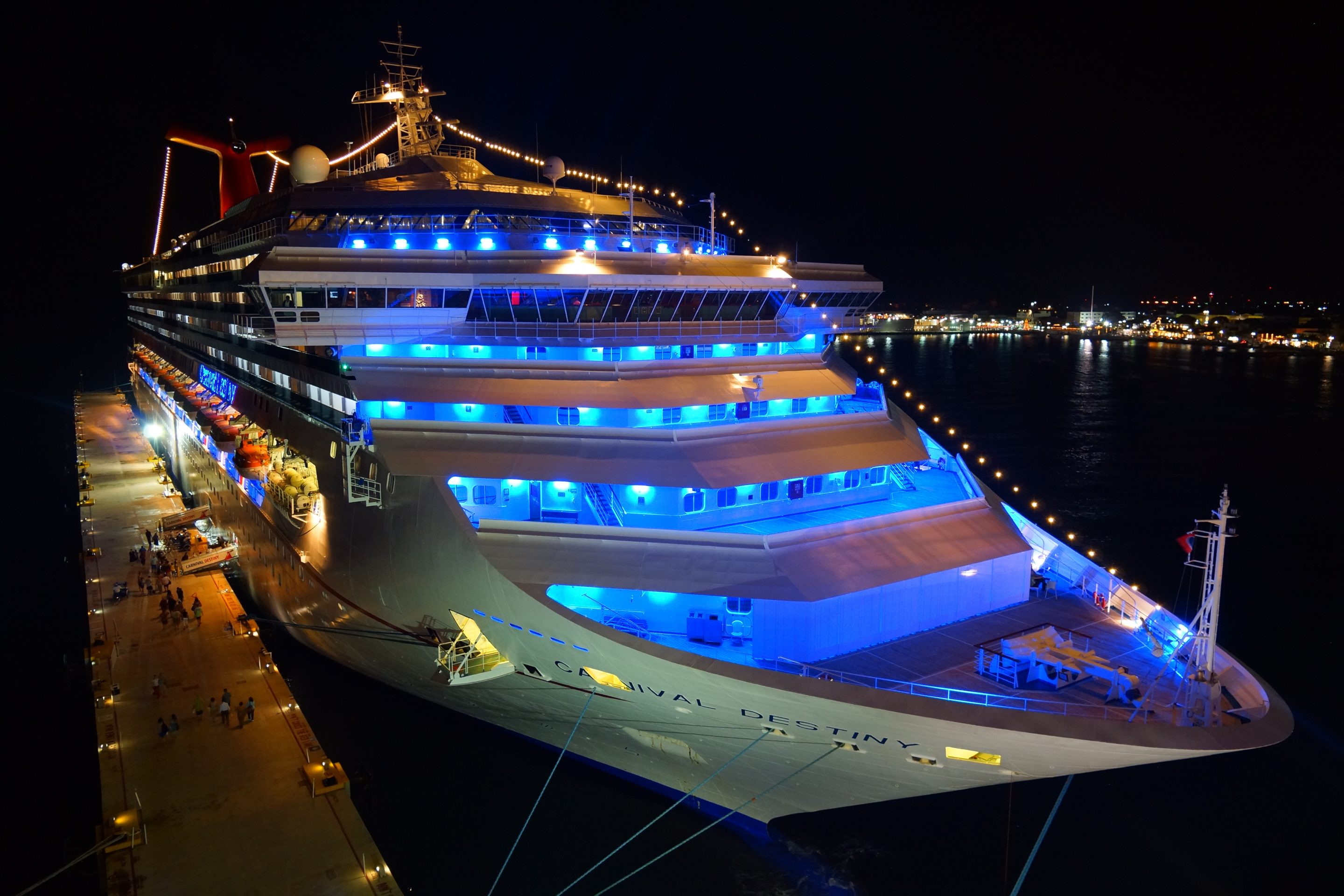
What is a Yacht?
Yachts are mainly privately owned and come in a variety of sizes with a cabin. Yachts usually cost around 10 percent of their purchase price in annual maintenance. These vessels require full-time staff including chefs, a captain, engineers and stewards. Most owners rent out their yacht to people on vacation to cover maintenance costs. They’re typically defined as their size to differ from a boat. The bigger and more expensive a boat is, the more chances are of it being considered a yacht.
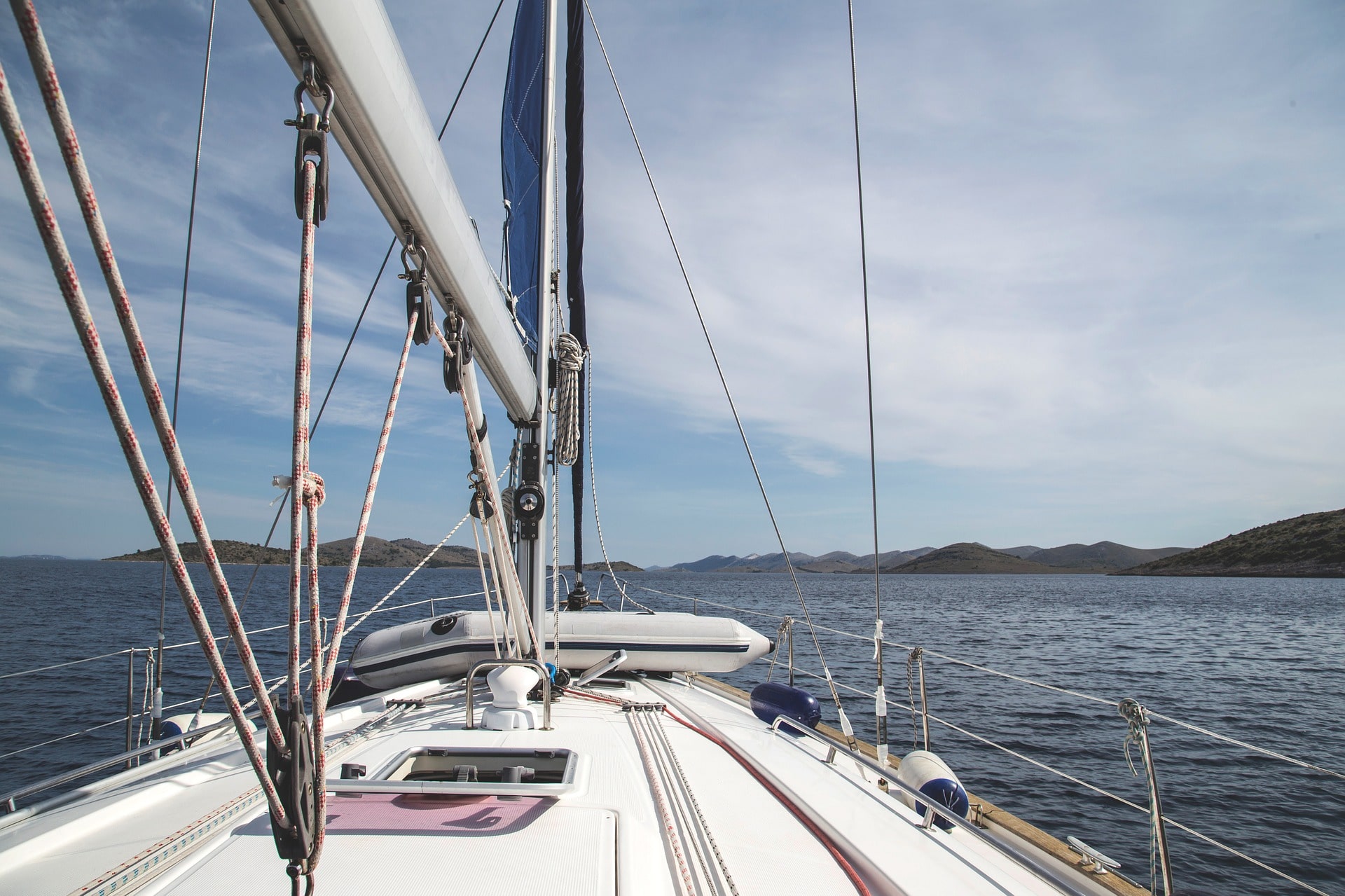
Yachts are still a fairly new territory, and many of the biggest ones didn’t exist 20 years ago. Used for pleasure or sports, the term ‘yacht’ originates from the word ‘hunt’ to purse pirates around and in shallow waters. They’re now considered more of a leisure purpose and come in two different classes: power boats and sailing. Their length and interior can range extensively. On average, they’re usually 40 feet long, though above 100 feet is considered a super-yacht. Many offer modern conveniences such as cable, air conditioning, computer-controlled sailing and more.
The Fascinating History of Yachting
Let’s take a look at the history of yachting. What was once only considered a sport has become an act of pleasure and transport. More celebrities own a yacht now than ever before. Though they’re still expensive to buy, people’s love for them makes them easier to purchase. You can now hire crew members and customize your yacht to accommodate your lifestyle.
Where Did Yachting Originate?
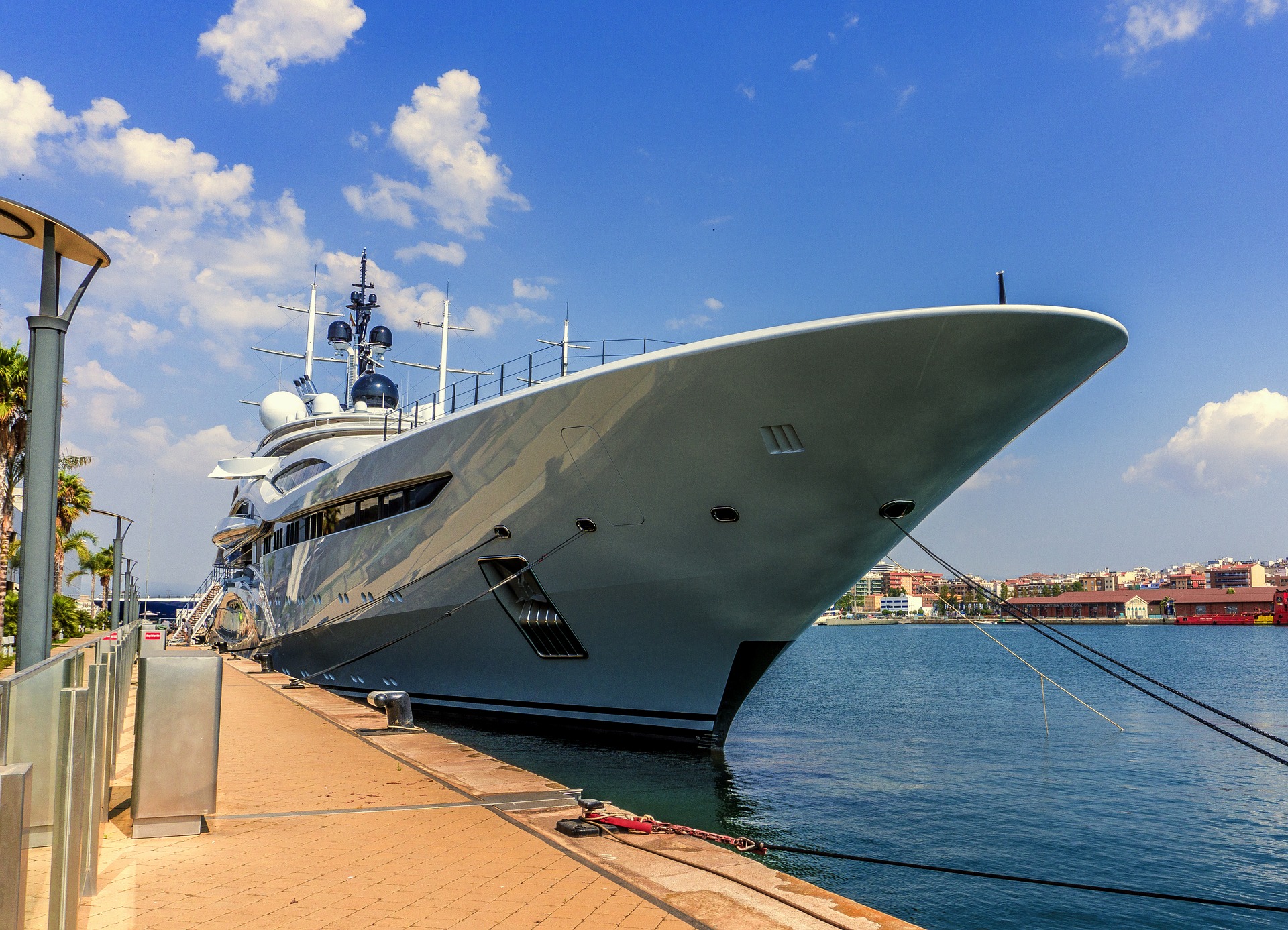
The history of yachting is fascinating. First invented in the 14 th century, the Dutch used fast and small boats for chasing criminals and pirates. Their sole purpose was to navigate quickly on waters. However, rich owners and merchants began using these yachts for personal use to travel overseas as a quick mode of transport. Quickly, the trend caught on and wealthy individuals purchased yachts for personal use. Many would use them to just travel the waters with no particular destination, other than an outing.
When Charles II of England spent 10 years in Holland, people celebrated his return to Amsterdam with a luxurious yacht. This included a crew of 20 people and he named the yacht, Mary. Charles II enjoyed sailing her along the Thames and studied the architecture and design of yachts. After educating himself, he built 20 of his own, giving him credit as the world’s first yacht developer. Several family members became a creator and developer too.
At this point, owning a yacht was considered a sport amongst Kings for over 100 years. By the 1800’s, the sport of yachting developed to other crowns of Europe. Only the wealthiest people in the world could join in, and quickly yacht clubs formed. This laid the groundwork for the popular leisure activity we've come to know and love today.
When Did Yachting Originate?
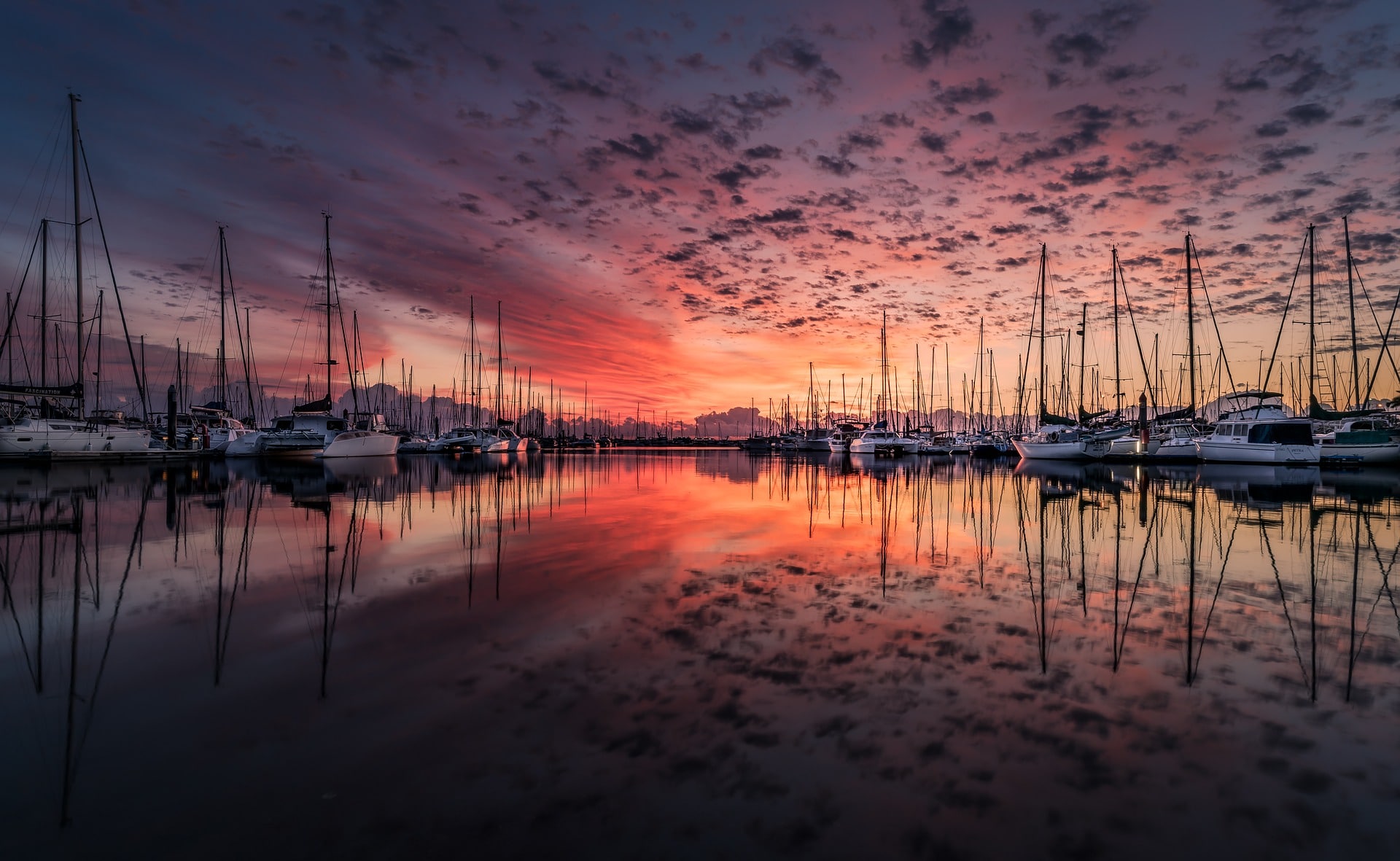
In 1661, there was a 40-mile race on the Thames between Charles II of England and the Duke of York. The history of yachting – particularly the sport - began here. In 1720, the first yacht club in the world established itself as the Cork Water Club. However, it wasn’t until 50 years later than two more clubs followed in England.
It makes sense that the sport could only occur in regions with plenty of water which also had suitable conditions. There also needed to be plenty of materials and resources in these countries to develop the boats. Yachting was still new at this point, so only wealthy people participated.
On June 1815, the world’s most famous yacht club formed in England. They named themselves The Royal Yacht Squadron with 42 gentlemen joining. On July 30, 1844, the United States formed the New York Yacht Club. They had the intention of competing with the English team and built a new yacht with a faster and sleeker design to represent the club.
The United States crossed the Atlantic in 1851 and invited England’s fastest yachts to a race. However, no-one would race it as it measured an intimidating 101 feet. America eventually joined a competition around the Isle of Wight and raced 15 other yachts for 53 miles, and finished eight minutes earlier than the runner up.
The Evolution of Yachting
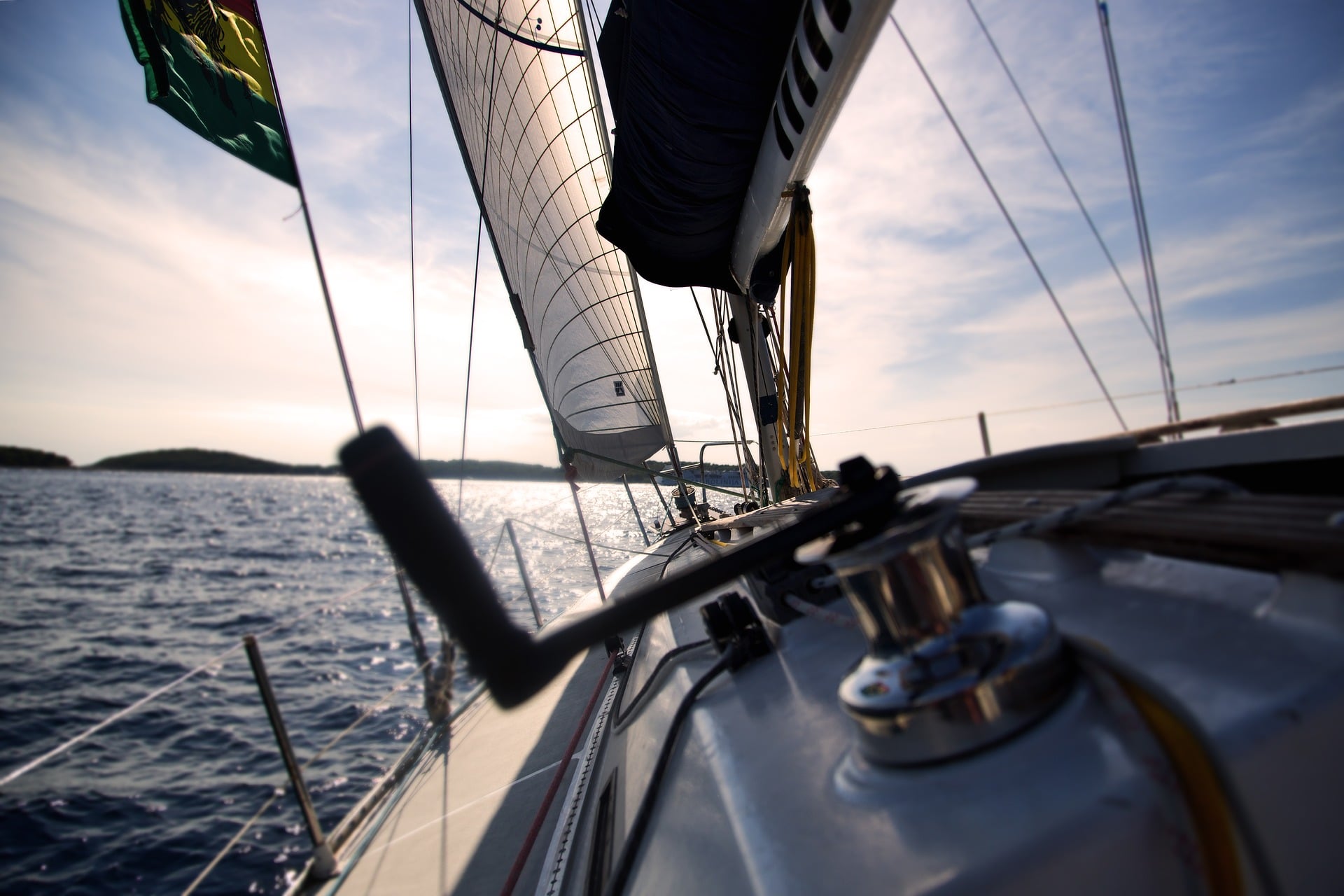
After the First World War and post war depression in Europe, yachting quickly dried out. As such vessels were possessed by the wealthiest people, owning one became difficult. Although people didn’t participate in the sport of yachting for several years to come, the War saw excellent technical developments in powering yachts.
They began being built with large diesel engines to power them quicker and faster through waters. Due to their new speed, corporations purchased them and the government owned 13 of the 29 diesel-engine yachts.
Yachts are now a lot bigger than they used to be. Thanks to technological development, people are more open to the idea of travelling around the world whilst being in contact with people on land. Satellite television, the Internet, phones, signals and more are available for owners. In the ’80’s, the world saw the superyacht industry. The number of wealthy people owning and affording yachts became a social acceptance.
As more yachts were produced and came with advanced navigation and technology, crew members trained professionally to become qualified to work on water. Increased regulations have also made it more possible for people to work and travel throughout different countries.
What’s Involved in Owning a Yacht?
Have you ever dreamed of owning a yacht? The truth is, it’s not always plain sailing. There are typically three categories to research: crew, maintenance and dockage. If you own a yacht over 80 feet, a crew is necessary and costs on average $6,500 per staff per month. The number of crew members depends on the level of service you require.
Maintenance not only takes a huge chunk of money, but time and effort. As your yacht reaches five years old, it’s time to consider repairs such as batteries, seals, pumps and other general maintenance tasks. Often, these maintenance costs are included in your warranty if the yacht is relatively new. However, it’s important to consider storing your yacht, fuel and food when you’re using it. On average, you’ll spend 10 percent of the yacht’s cost every year on general maintenance.
Running and operating a yacht isn’t cheap. For an 80ft yacht, dockage prices will cost between $1,200 and $6,000 per month, depending on your location of course. The smaller the yacht and more derelict the area, the cheaper the dockage price. Be sure to consider all of the expenses, as if you aren't prepared it can quickly become a monetary pitfall.
What Do You Know about The History of Yachting?
We hope you enjoyed reading about the history of yachting and how it’s evolved over centuries. The future of yachts looks bright and promising. By 2050, it’s predicated that we’ll use 3D printed yachts to give you a customizable experience. Yacht owner Neville Crichton travels the world via his yacht and believes that future owners will explore new remote locations not yet discovered.
What do you know about the history of yachting? We’d love to hear about your knowledge. Share your facts and information in the comments to keep this discussion going.
Related Article: The VanTom Superyacht Sets the New Standard for Luxury Vessels
Freelance Writer and Vocal Coach with a passion for travelling - particularly the United States. Fitness enthusiast when I feel like it, but you can catch me sipping pink Gin more often than not.
You Might Also Like

Best Car Covers to Protect Your Car’s Paintwork From Damage

Genesis Cars: A Promising Newcomer in the Luxury Market

Easy Ways to Find a BMW Service Shop and Its Benefits
Leave a reply cancel reply.
From Sails to Motors: The History of Yachting
How yachting went from a necessity to a lifestyle.
As a boating enthusiast like us here at Van Isle Marina, you probably spend a lot of time thinking about boats, looking at boats, and being on boats at every opportunity you can seize. But have you ever wondered how today’s luxury vessels came to be?
What was there before the motorboat grew to become a luxury yacht, which further grew to become a superyacht? If you’re as curious as we were about how, when, and where the yachting lifestyle evolved, read on for our brief guide to the history of yachting.
Not sure what makes a yacht a yacht in the first place? Review our Yacht Sizes, Styles, Types & Categories post as a refresher. In short, a yacht is mainly considered to be any type of sea vessel used strictly for recreational or pleasure purposes like cruising, entertaining, water sports, or fishing. There is a wide variety of sea vessels that are classified as yachts, with the term largely representing any vessel used recreationally that is large enough to have some form of sleeping quarters for overnight trips, as well as a kitchen and bathroom.
Today’s modern luxury yachts have come along way. Let’s take a look at where it all started.
Origin of Yachting
So, where did the term yachting come from? Originally called jachtschips (hunting boats), yachts were invented by the Dutch Navy in the 14 th century to catch pirates and thieves quickly in shallower waters where larger ships couldn’t be sailed.
It wasn’t long until wealthy merchants and ship owners began using these smaller and speedier boats to sail out to celebrate their returning merchant ships. Sailing yachts also became popular with royalty, and it quickly became chic to use them for pleasure cruises and inevitably, for racing. English yachting is said to have officially begun when King Charles ll sailed the Mary to Britain following his return from exile in the Netherlands.

A 20 metre (66 foot) craft, the Mary inspired Charles and his brother James, the Duke of York, to construct more yachts and begin racing. They raced for sport for the first time in 1662 on the River Thames on a 100-pound wager.
Yachting Gains Traction
After a while, yachting slowly became fashionable among the wealthy, with the first social Yacht Club (the Water Club) in Cork, Ireland, being established in 1720. It was first used as a coast guard style organization. In the Water Club, races were actually chases, where the fleet of vessels “raced” to catch a nonexistent enemy—a nod to the yachts’ original crime-fighting purpose.

These Pilot Schooners were designed to guide the cargo-carrying Clippers to safe harbour, and in order for the crew to make a living guiding cargo ships to shore, they had to be the fastest.
The New York Yacht Club (NYYC) began in 1844 and the first racing schooner, the 30.78 metre America sailed across the Atlantic. She was turned down from the races in England, but joined in a race around the Isle of Wight with 14 yachts from the Royal Yacht Squadron, winning the Hundred Guinea Cup , known today as America’s Cup. Using this new design, the NYYC won the cup every year, from 1870-1983.
Yachts Get Bigger and Faster
After 1850, when steam-powered and internal combustion engines began to replace sails as the main power source, larger yachts and paddle wheel boats were developed as pleasure craft for long-distance cruising. By the second half of the 20 th century, the majority of yachts relied on internal combustion engines (motor yachts), having moved away from using sails as auxiliary power.
Governance of the Yachting Industry
In 1907, yacht racing had caught on to the point where a governing body was required to create a universal set of rules and regulations for the sport since each country and region had their own set of rules—leading to much confusion. And so the International Yacht Racing Union (IYRU) was created in Paris. It was later renamed to the International Sailing Federation in 1996. Around this time, international racing really took off, splitting yachting into the two main factions we see today—racing and cruising.
Yachting Today
Today, the yacht has continued to develop with advances in technology and materials depending on the intended use – from long-range cruising, to fishing and watersports, to being used as a home away from home. Although wooden boat purists will still insist on a wooden hull, the vast majority of today’s hulls are created from much lighter materials like fibreglass, and designs vary according to the make and model of the vessel.
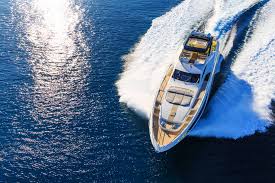
Among other advances are the multihull design (catamaran/trimaran) and special features such as computer controlled winches on sailing yachts, an auxiliary engine to power the alternator, wind, water, and solar powered generators, GPS systems, radar, electricity, tender storage, joystick steering, and much more.
On top of these features, today’s luxury yachts have endless amounts of finishing touches that we are sure would have impressed the original yachtsmen, including leather interiors, teak decking, laundry machines, kitchen appliances, and the list goes on.
Whether you’re interested in a classic motor yacht, flybridge, a larger luxury rig, or something in between for your yachting lifestyle, come visit us at Van Isle Marina where we offer a wide range of new and used models as well as a fully secure maintenance and storage facility .
250 656 1138
2320 Harbour Road, Sidney, British Columbia V8L 2P6 [email protected]
Marina Services
Marina Layout
Yacht Sales
- Link to Facebook
- Link to Instagram
©2024 Van Isle Marina | Design by Caorda

- We Are Hiring
- Naval Architecture
- Installations
- Seakeeper Extended Warranties
- Naval Architecture, Engineering & Construction

- All Speed 24VDC Fins Pricing
- Interceptor Pricing
- All-Speed Fin Stabilizer
- Custom-Shaped
- Jetboats Stabilization
- Stabilization
- Marine Electronic Innovations
- Yacht Management
- Antifouling Coatings
- Air Conditioning & Refrigeration
- Fiberglass, Gelcoat, & Paint
- Mechanical & Electrical Services & Repairs
- Haul Out & Dry Dock Services
- Schedule Demo Boat Ride
- Starboard Yacht Interactive Assessment
- Marine Electronics
- Seakeeper 1
- Seakeeper 2
- Seakeeper 3
- Seakeeper 5
- Seakeeper 6
- Seakeeper 9
- Seakeeper 16
- Seakeeper 18
- Seakeeper 26
- Seakeeper 35
- Fins & Interceptors
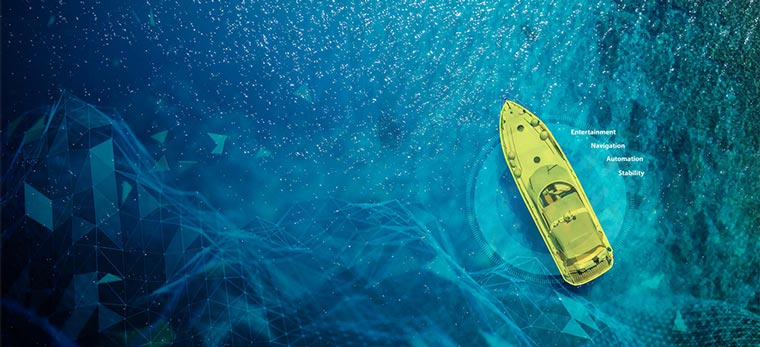
The History of the Yacht
For those of us interested in boats and sailing, we’ve heard the term “yacht” more times than we can count. Yachts are very common today, with many people owning their own boats for pleasure or sport and numerous yacht clubs to be found near any large body of water. But have yachts always been this popular? And where did they first emerge?
We wouldn’t be a top provider of yacht services in Fort Lauderdale, FL if we weren’t knowledgeable in the history of yachting. If you’ve ever wondered about where yachts came from, take a trip back in history with us.
Yachting origins
Sailing has been around since some of the world’s earliest civilizations. Egyptians back in 3,000 BC used to build impressive boats to place next to royal bodies to carry them to the afterlife. In the 14th century, the world’s first yachts came about, also because of royals.
Rich Dutch merchants used to use small and fast-moving boats for celebrations when their merchant ships returned, but began using these “jaghts” to take friends out for fun, as well. This caught on and truly became a status symbol when Charles II of England was awarded a yacht, named Mary, after returning to the throne from exile.
Charles II is considered the world’s first yachtsman, as he built more than 20 yachts over the course of his life and spent a lot of time researching navigation and naval architecture. His brother also joined in, and the two became dedicated to sailing for personal pleasure.
The brothers created the first regatta, a 40-mile race on the River Thames, in 1661 when they raced their two boats. The fun from the race was contagious, birthing a new “sport of kings.”
Not just for royals
Given their expensive nature, large, luxurious yachts were typically reserved for those of royal descent. However, this began to shift near the 1700s when wealthy non-royals began purchasing or building their own yachts. The first yacht club was the Cork Water Club in Ireland, established in 1720. Soon after, yacht clubs became prevalent.
Over in America, the New York Yacht Club (NYYC) was born in 1884. The members decided to build a pilot-style schooner, one of the fastest designs available at the time. Pilot schooners were boats designed to race out to guide cargo ships back to port. The first one there got the job, so they had to be fast.
When the NYYC completed the boat, deemed the America, they sailed to England and participated in regattas there. The America won the club the Hundred Guinea Cup, and they continued to compete for the title for more than 100 years after.
Modern yachting
As time went on, more and more people became interested in owning boats for pleasure. While yachts are still largely used by the wealthy, they have become much more affordable. Owning a yacht is not as big of a status symbol as it was in the 1600s.
There are many types of yachts now, including day sailing yachts, weekender yachts, cruising and luxury sailing yachts and racing yachts. Identifying a yacht has nothing to do with its size or stature, its brand or its power. It simply is a boat purchased for the pleasure of its owner, in the same way it was when it all started.
If you own a yacht or are interested in learning more about them, give Starboard Yacht Group LLC a call. We are a premier provider of yacht services in Fort Lauderdale, FL, with over a decade of hands-on experience with beautiful boats. We can do everything necessary to keep your yacht in great shape. Give us a call today to hear more about our services!
Thank You! Your message has been sent.
Thank you your application has been received., privacy overview.
| Cookie | Duration | Description |
|---|---|---|
| cookielawinfo-checbox-analytics | 11 months | This cookie is set by GDPR Cookie Consent plugin. The cookie is used to store the user consent for the cookies in the category "Analytics". |
| cookielawinfo-checbox-functional | 11 months | The cookie is set by GDPR cookie consent to record the user consent for the cookies in the category "Functional". |
| cookielawinfo-checbox-others | 11 months | This cookie is set by GDPR Cookie Consent plugin. The cookie is used to store the user consent for the cookies in the category "Other. |
| cookielawinfo-checkbox-necessary | 11 months | This cookie is set by GDPR Cookie Consent plugin. The cookies is used to store the user consent for the cookies in the category "Necessary". |
| cookielawinfo-checkbox-performance | 11 months | This cookie is set by GDPR Cookie Consent plugin. The cookie is used to store the user consent for the cookies in the category "Performance". |
| viewed_cookie_policy | 11 months | The cookie is set by the GDPR Cookie Consent plugin and is used to store whether or not user has consented to the use of cookies. It does not store any personal data. |
- Nautical Sayings: Exploring the Fascinating World of Maritime Language
Ahoy there, fellow adventurers of the sea! Whether you're an experienced sailor or just someone fascinated by the world of nautical adventures, you've probably come across some intriguing and often perplexing maritime sayings. In this comprehensive article, we'll dive deep into the ocean of nautical sayings, yacht word origins, boating sayings, and the rich tapestry of nautical slang that has shaped the language of the high seas.
Setting Sail with Nautical Sayings
Ahoy, matey.
Our journey begins with the iconic greeting, "Ahoy, matey!" This classic nautical saying has been immortalized in countless pirate tales and seafaring adventures. But have you ever wondered about its origins and the fascinating history behind it?
The phrase "Ahoy, matey!" finds its roots in the 17th century when pirates and sailors needed a catchy and distinctive way to greet each other on the high seas. We'll explore how this phrase became a symbol of maritime camaraderie and adventure.
Charting the Course of Nautical Language
Before we delve into specific nautical sayings, let's navigate through the history of maritime language. The sea has always been a source of inspiration for unique expressions, and understanding the evolution of this language is key to appreciating its richness.
Maritime language is a dynamic blend of influences from various cultures, including English, Dutch, and even French. We'll journey through time to uncover how these linguistic influences shaped the nautical lexicon we know today.
Knots and Nautical Expressions
The maritime world is a treasure trove of fascinating expressions related to knots and ropes. From "tying the knot" to "left in the lurch," we'll unravel the meanings behind these captivating sayings.
Let's explore more nautical phrases related to knots, rigging, and seamanship. Each saying carries a unique history, often reflecting the practical challenges and traditions of sailors.
The Call of the Sea
Beyond greetings and practical expressions, sailors had a language of their own to communicate effectively on the vast expanse of the ocean. We'll delve into the lesser-known but equally intriguing nautical phrases that were used for signaling, navigation, and coordination.
Discovering Yacht Word Origins
The yacht: a luxurious icon .
Yachts epitomize elegance and luxury on the water. But have you ever wondered where the term "yacht" itself comes from? Let's set sail on a journey through time to explore its origins.
The word "yacht" has a fascinating history that dates back to the early days of sailing. We'll trace its evolution from humble beginnings to the opulent vessels we associate with yachts today.
Yacht or Jacht: A Linguistic Odyssey
Did you know that "yacht" is closely related to the Dutch word "jacht"? We'll uncover the linguistic connection between these two words and how it has influenced modern yacht culture.
The Dutch influence on yacht design and terminology is profound. We'll delve into how Dutch shipbuilders and explorers played a pivotal role in shaping the yacht industry.
The Golden Age of Yachting
Yachting isn't just about boats; it's a cultural phenomenon with a rich history. During the 19th century, the "Golden Age of Yachting" saw a surge in yacht building and racing. We'll explore this period and its impact on yacht word origins.
Sailing Through Boating Sayings
Smooth sailing ahead.
When it comes to boating, the saying "smooth sailing" is music to a captain's ears. Join us as we explore the origin of this optimistic phrase and how it reflects the sailors' eternal quest for favorable winds.
"Smooth sailing" isn't just a saying; it embodies the aspirations and experiences of mariners throughout history. We'll recount stories of legendary voyages and the calm seas that inspired this expression.
Weathering the Storm
Boating isn't always smooth sailing. Sometimes, sailors must "weather the storm." We'll examine the origin of this phrase and its enduring relevance to the maritime world.
Navigating storms at sea has always been a formidable challenge. We'll share tales of courage and resilience that shed light on the origins of this powerful metaphor.
Deciphering Nautical Slang
Aye, aye, captain .
Nautical slang is a language all its own, and "aye, aye, captain" is one of its most recognizable phrases. But what does it really mean, and why is it used so frequently on ships?
Read our top notch articles on topics such as sailing, sailing tips and destinations in our Magazine .
Check out our latest sailing content:
Traditional sailor tattoos: meaning of the swallow, the most popular catamarans of 2023, fishing and sailing: where to sail for the best catches, skippered boats: how to pack for a yachting holiday, boat rental with skipper: everyone can go to sea, skippered boats: myths about sailing, sail from lefkada for 14 days. where to, what not to miss when visiting lefkada, skippered boats: step-by-step boat rental, where and why to sail from lefkas marina, don’t panic: handling maritime emergencies, skippered boats: how to choose a boat, the best sailing routes from biograd na moru, yachting away from ourselves: a voyage to inner peace, sail to the 7 most beautiful sights in greece, skippered boats: how to put together a crew, skippered boats: the most popular yachting destinations, what skipper's licence do i need, skippered boats: what you can experience when yachting, from lefkada or corfu to paxos and antipaxos, discover the paradise of paxos and antipaxoss, skippered boats: typical day on board, skippered boats: what it actually looks like on a boat, discover corfu: sailing adventure in the ionian, sextant and navigation: survival without gps, 5 best sailing routes in the bahamas, skippered boats: how much does a boat holiday cost, yachting guide to the bahamas, the ultimate yacht cleaning kit, introduction to chartering with a skipper.
Swabbing the Deck: Nautical Work Lingo
"Swabbing the deck" might sound like a chore, but it's also a nautical saying with a rich history. We'll uncover its origins and its role in the daily life of sailors.
Navigating Ship Sayings
Shipshape and bristol fashion .
When something is "shipshape and Bristol fashion," it's in excellent condition. Discover the intriguing story behind this phrase, which hails from the bustling port city of Bristol.
Between the Devil and the Deep Blue Sea
Sometimes, sailors find themselves "between the devil and the deep blue sea." Explore the origins of this saying and the predicaments it describes.
Exploring Boat Phrases
In the same boat .
We often say we're "in the same boat" when facing a common challenge. But where does this saying come from, and why do we use it to express solidarity?
Casting Adrift: Origins of "Adrift"
Being "adrift" can have a figurative meaning beyond just being at sea. Discover the roots of this saying and how it found its way into everyday language.
Unraveling Nautical Expressions
By and large: a nautical measurement .
The phrase "by and large" has nautical origins tied to sail trimming. Join us as we explore the history of this saying and its transition to everyday language.
Three Sheets to the Wind: A Nautical Reference to Intoxication
Have you ever heard someone described as being "three sheets to the wind"? Learn about the nautical basis of this humorous expression.
Boating Phrases and Sailor Jargon
"know the ropes": mastering the art of sailing.
To "know the ropes" means to be skilled and knowledgeable. We'll sail through the history of this saying and its significance for sailors.
"The Whole Nine Yards": Nautical or Not?
Is "the whole nine yards" a nautical phrase? We'll unravel this linguistic mystery and see if it has nautical origins or not.
Sailing Expressions and Seafaring Terms
"batten down the hatches": preparing for a storm.
When sailors "batten down the hatches," they're preparing for a storm. Discover the practical origins of this vital nautical saying.
"Between the Devil and the Deep Blue Sea": A Nautical Dilemma
We revisit the phrase "between the devil and the deep blue sea" to explore its deeper connotations in the context of seafaring.
Nautical Words and Phrases: A Sailor's Lexicon
Nautical sayings: the ultimate lexicon .
Summarizing our exploration, we'll compile a comprehensive list of some of the most intriguing nautical words and phrases that have left their mark on the English language.
As we sail back to the shore of this captivating journey through nautical sayings and maritime language, it's clear that the sea has not only inspired adventurers but also enriched our vocabulary with colorful expressions. From "ahoy, matey" to "the whole nine yards," each saying carries a piece of nautical history that continues to resonate with us today.
So what are you waiting for? Take a look at our range of charter boats and head to some of our favourite sailing destinations.
I am ready to help you with booking a boat for your dream vacation. Contact me.

Denisa Nguyenová

To the Bitter End: How Sailors Have Shaped the English Language
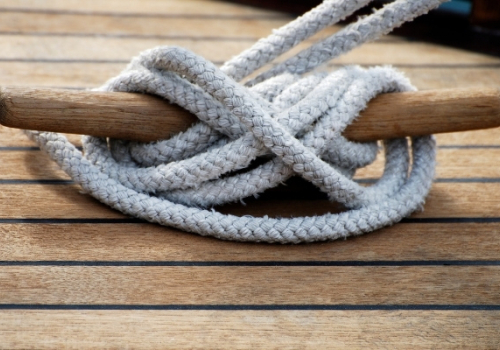
While writing an article recently, I noticed that I’d used at least three expressions that have a clear nautical origin.
This, sadly, was not a rare example of me being clever, but rather shows just how many English words and phrases derive from our maritime past.
Let’s begin, as any proper nautical education should, with our ports and our starboards.
Port and starboard
Before boats had rudders, they were steered by a board on the right side, which was known as a steerboard. Thus it became the ‘steerboard side’. The left side then became the side on which to tie up in port, so as to not damage the steerboard when docking.
King Henry V1 of England wanted bigger guns on his ships, and ordered cannons too big to be tied on deck in the traditional manner. He commissioned a Frenchman to solve the problem, who then built doors in the sides of the ship that the cannons could be fired through. French word for door: porte.
And there you have it, the portholes we look through each day were originally built to fire a cannon through. Now that would clear the summertime anchorage in Cala di Volpe pretty quick. You are too close to my boat. I can hear your music. Your stews are playing that song by Alicia Keys…again. Roll out the cannons! Ah, look at that. You are indeed on fire.
While we’re on the subject of cannons, ‘Loose Cannon’ came from the danger present when a cannon that was tied in place on deck came free of its lashings and careened around the deck, often crushing crew under its heavy wheels.
Keel-hauling
This expression comes from the barbaric punishment of pushing a sailor on a rope over the side and dragging him under the boat from side to side. Being put on watch for sleeping in doesn’t seem so bad now, does it.
Letting the cat out of the bag
Reminding us again how lucky we have it, this expression comes from the 9- tailed whip used to discipline sailors, which was apparently stored in a bag made of red material so as to hide the bloodstains. When the cat was let out of the bag, trouble was coming.
The origins above are not generally contested. But with the next ones, the waters get a bit murkier.
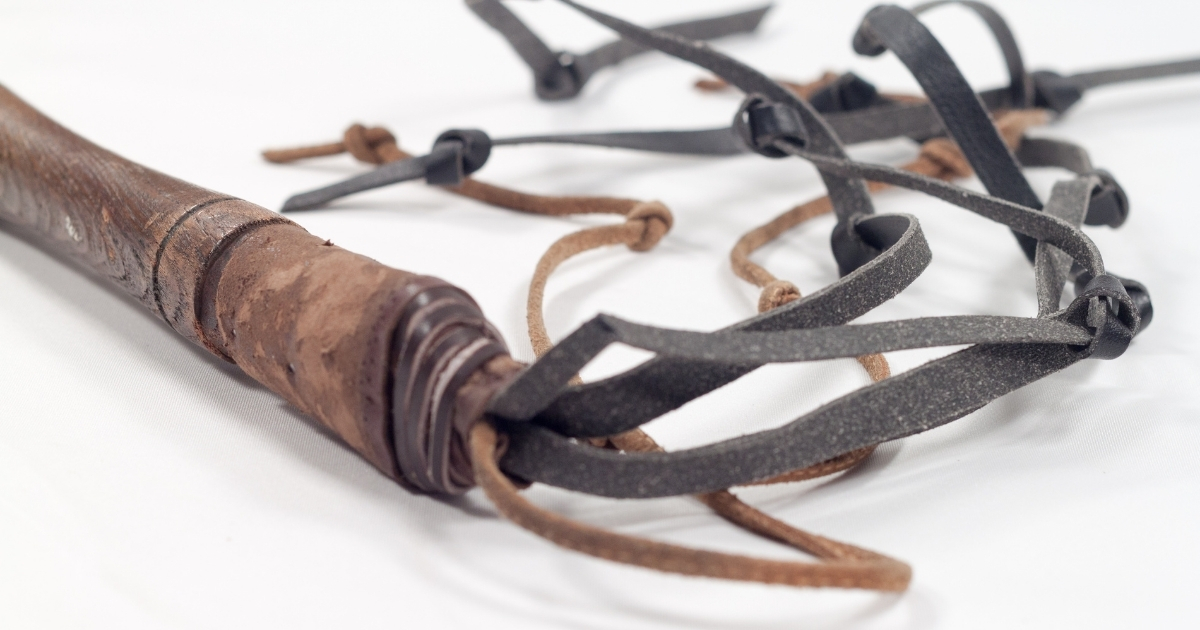
There is quite a fashion for attributing nautical origins to English phrases, a trend which many commentators put down to a mysterious organisation called CANOE: the Committee to Ascribe a Nautical Origin to Everything.
A word of warning: If you did look up CANOE, you’d be wasting your time as it is imaginary- unless of course you enjoy looking at pictures of people wearing fluorescent clothing and helmets sitting in hollowed out pieces of plastic and bashing into big rocks.
Many of the popular nautical origins of sayings have been, if not disproved, then at least discredited by etymologists (not entymologists, as insects have no place in this story). This is a shame (not the insect part, although if you were partial to insects I can see how that too would be disheartening), because some of the best stories have been found to be large parts fiction.
In case you aren’t familiar with it, the most common explanation for the word ‘posh’ is that on the ships that passed between England and India in colonial days, the wealthier passengers would be allocated the cabins that received the least sunlight, in order to make their long journey more comfortable. Therefore, port out, starboard home. POSH. Apparently this abbreviation was written either on the passenger tickets, or scrawled in chalk on the guest luggage, to help the crew deliver the trunks to the correct cabins.
However, this is where the story starts to take on water , for no ticket has ever been found with the abbreviation POSH on it, nor a photo uncovered where the trunks had those chalk markings. Considering that many photos have survived from this era, where people gathered on the quay upon departure posing for photos amidst piles of luggage trunks, the absence of photographic proof makes it highly unlikely that the expression POSH evolved from here. Furthermore, as Fiona MacPherson from the Oxford Dictionary blog rightly points out, this origin doesn’t account for the return journey from India, where the sunlight would have fallen on the other side of the ship, necessitating the abbreviation ‘soph’.
Oh, he’s so soph. It's a shame the Port Out Starboad Home theory doesn't bear scrutiny, because it’s a jolly good story, and in the absence of an interesting alternative, I am going to hold out hope for a ‘posh’ ticket to be discovered one day in an episode of Antiques Roadshow.

Son of a gun
Another highly contested entry into the CANOE hall of fame is ‘son of a gun’, which has several possible explanations and has been around since at least 1708.
One possible and popular option is that when women were allowed to travel on the ships during passages, that the resulting babies would be conceived or born (or both) on the gun deck.
Another, along the same lines, is that when a baby was born on board with unclear paternity, the child was apparently called ‘son of a gun’.
However, another explanation is a good deal stronger: that a child born to a sailor or soldier, was simply called ‘son of a gun’ as the child of a military man.
The difficulty in tracing these things and their meanings can be seen in the fact that son of a gun can either be complimentary: ‘You did it, you son of a gun!’, or derogatory: ‘He stole it, that son of a gun!’ (much like son of a bitch). As we can’t even manage to be definitive in what sayings like this mean now, it is very difficult to know what they meant hundreds of years ago. Ask an Australian, for instance, what a ‘bogan’ is. You’re likely to get a wide range of answers, which may or may not involve the word ‘Holden’. Language is a funny thing, as our crusty friends at CANOE will no doubt attest.
Another phrase of unclear origin is Hunky-Dory, the most interesting story offered is that it came from the name of a street in Japan where sailors could find all sorts of pleasures: Honki dori.
Back on more solid etymological ground now, there is little argument about the following:
Feeling blue
Comes from the tradition of arriving in port with blue flags up and a blue line painted on the hull when the boat has lost a captain or senior office on a voyage. Although it’s possible that below decks they were having a party, given the lashings and keel-haulings mentioned above.
This expression definitely came about when the excess fat from boiling meat for crew meals was scraped off and stored in barrels that were then sold ashore for extra money for the crew. The fat was referred to as slush, so there came about ‘slush fund’. Over the years it took on a political meaning for dodgy campaign funds, but also exists still as an expression for extra money made on the side.
Phrases.co.uk gives this quote from The Royal Navy Men’s Advocate , 1757:
Tars whose stomachs are not very squeamish, can bear to paddle their Fingers in stinking slush’, and in the Gentleman’s Magazine of 1756 there appears : ‘he used much slush (the rancid fat of pork) amongst his victuals.’ Victuals is an old fashioned word for food.
That last quote in itself should be enough to get us to stop whingeing to our chefs to have more/less/better variations of burger days.
This comes from a small, triangular sail that set above the other sails on a square rigger. It seemed, as it were, to scrape the sky.
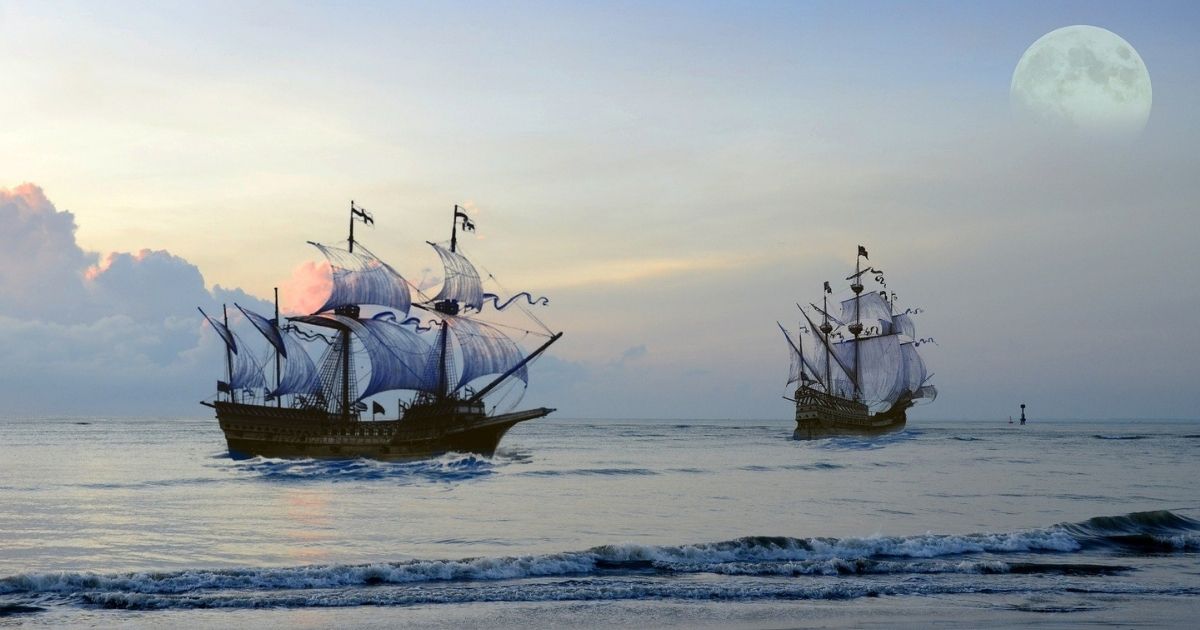
Three sheets to the wind
Now this one has a certain sailing origin, and one which some of us can no doubt relate to. For those struggling to follow, it means drunk. Not just a little bit tipsy, but the type ricocheting from wall to wall and telling all and sundry that 'I love you, man.' This phrase comes from the sailing terminology that if three sheets were loose, the sail would flap about wildly and the boat would’ lurch about like a drunken sailor’. It used to be three sheets in the wind, for the sailing pedants out there. Tipsy was one sheet, and ‘well on the way’ was two sheets to the wind. (For those working on motoryachts who might make the mistake of thinking a ‘sheet’ is a sail, it’s not, it’s a line, so if the ‘sheet’ is loose, the sail flaps about. This is the kind of splendidly illogical terminology that sailors delight in tripping motoryacht crew up with, so be wary.)
As the crow flies
Prior to modern navigational techniques, British ships carried a cage of crows, which would be released to show which direction the closest land was.
Taken aback
is also a definite entry for the gnarly CANOE lads, as the words ‘taken aback’ used to mean when the sails of a ship were blown flat against the masts and spars and the boat stopped moving forward.

Push the boat out
This phrase emerged from acts of generosity, in the act of helping someone push their boat off the shore. The meaning changed over time into acts of generosity in the bar, whereby if someone was told it was time to ‘push the boat out’, it meant it was time for them to buy a round. In recent years it has changed again; now its common use is to spend extravagantly.
As for origin of the word 'yacht'?
The Oxford Dictionary explains the origins of yacht as ‘mid 16th cent.: from early modern Dutch jaghte, from jaghtschip ‘fast pirate ship’, from jag(h)t ‘hunting’ + schip ‘ship’'.
The bitter end
The Bitt is a cleat or post on the deck of a ship, for fastening lines. When a line or chain is played out to the bitter end, it means there is no more line to be used.
Next time: Is 'it's cold enough to freeze the balls off a brass monkey' a naval expression? Why do we say 'clean slate', and 'Davy Jones' Locker?' Please ask a question or tell us which expressions 21 st century seafarers are adding to the language!
First published by OnboardOnline on 29th January 2014. Last updated on 04th December 2020.
Post your comment
You cannot post comments until you have logged in.
No one has commented on this page yet.
RSS feed for comments on this page | RSS feed for all comments
Search articles with keywords

SailingEurope Blog - Sailing, Yacht Charter and Beyond
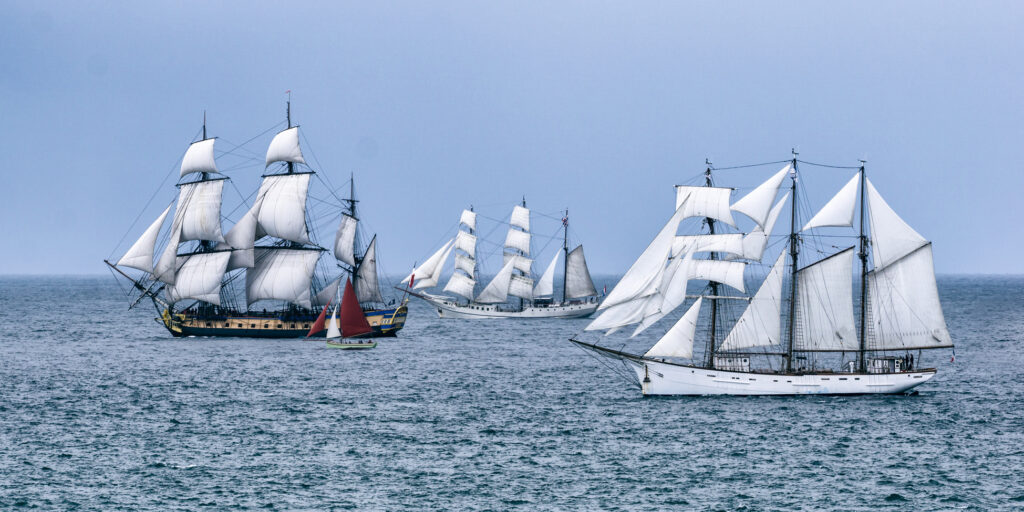
The Yacht – The Meaning and the Origin of the Word
In my language there are a few words for a floating object, or a vessel. According to the size and the purpose of the vessel, those words could be translated as “dinghy”, “yacht”, “boat” or “ship”. Some types of vessels have international names, for example “catamaran” or “hovercraft”.
What Does Yacht Mean?
However, when you say “ yacht” in my language, everyone know exactly what it is about. The word “yacht”, unlike other terms, has certain connotations. It always links with something classy, fancy, wealthy, elegant, and even glamorous.
For example, if you say that you have spent a week aboard a sailing boat , the recations of people will be more or less neutral. On the other hand, if you say that your week aboard a yacht was excellent, many people will become jealous. They will imagine you in a scene from a James Bond movie : aboard a massive white yacht in Monte Carlo , having a cold martini (shaken, not stirred)…
I wanted to share with you this language introduction because I found an interesting story about the word “yacht” and its origin. The word “yacht” became an English and an international term after an event that happened a long time ago.
How Do You Spell ‘Yacht’?
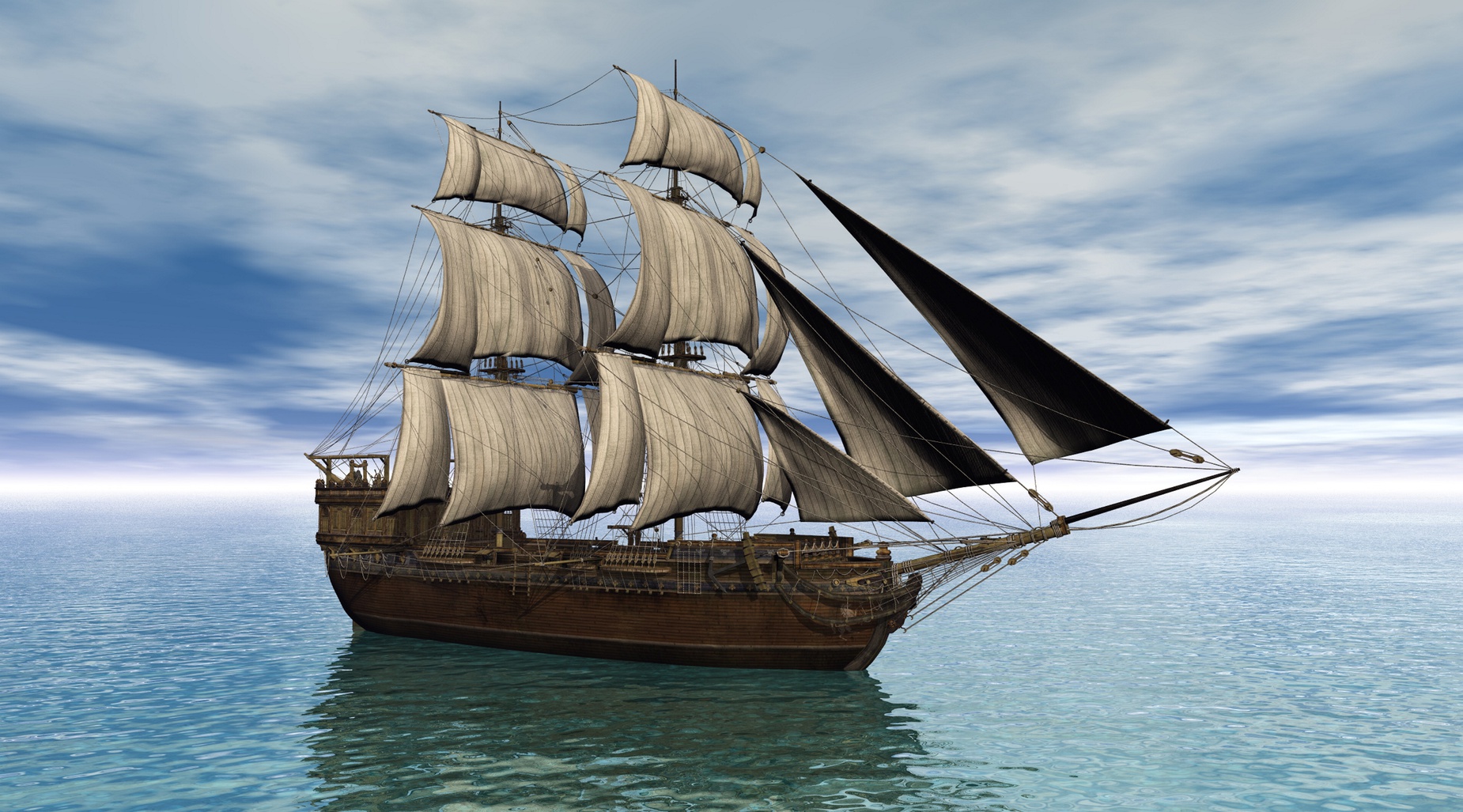
This word comes from the Dutch word “jacht”, which means “hunt”. Furthermore, “ j achtschepen” was the name for narrow, light and very fast sailing boats that the Dutchmen were using for intercepting larger and slower boats and ships.
One of the ‘hunters’ was given as a present to the British king Charles II . In His Majesty’s free time this vessel was not used for intercepting. Instead, was using it for fun. That is why the word “yacht” eventually became the term for vessels/boats made for pleasure.
I would highly appreciate comments from the native speakers of the English and Dutch languages. Especially since I am not one of them. No matter whether this story is true or not, it still sounds interesting to me.
Find out more about sailing quotes and phrases here .
I wish you a calm sea, a fine wind and a strong mast!
8 thoughts on “The Yacht – The Meaning and the Origin of the Word”
I looked up the origin of the word yacht, and it said it is a mid 16th century, Early Modern Dutch word from ‘jaght,’ from ‘jaghtschip’ meaning “fast pirate ship,” from ‘jaght’ which means “hunting” + ‘schip’ meaning “ship”.
I like the story of King Charles. It makes sense that that is why a yacht has the definite aura of wealth and pleasure!
Almost but not 100%. Actually the verb ‘jagen’ to hunt goes back to middle high German,i.e. Deutsch not Dutch, and before that it was ‘jagon’ in lower high German. But it seems that it all started with Greek and travelled North.
I guess that mid 16th century, the Dutch word jaght or jaghtschip was the word that got picked up. Not the earlier middle high German word where it came from.
Today it is jacht in Dutch, meaning hunting and it also the word for a luxury sailing boat.
In German Jagd is the word for hunt. Germans use the Dutch or English Jacht or Yacht for the boat.
Did the Germans design the original schooners? I think not! Since some Netherlanders speak a form of the Deutschland language, this word is shared (jacht/Dutch—jagd/German: meaning to hunt). It was the Dutch (Netherlanders) who designed the “flyut” or flute sailing ships, l-o-n-g before any British ever thought of such a ship—and—any German. The schooner grew out of the basic designs of the Dutch flute sailing ship (known for it’s speed). The Dutch economy relied heavily on trade and shipping, and were, thus, cutting edge innovators in ship building. Their engineering skills, was and is, plainly seen in their dike system, as well.
My father built a beautiful wooden replica of the”yacht” referred by the author (“Yacht Mary”) which was a present from the city of Amsterdam to King Charles II of England in 1660. They wrecked the ship a few years later (already too much partying on yachts, perhaps?)
I noticed the plaque that came with the model ship spelled the name as “Yatch” Mary. First, I thought, maybe, it was old English or Dutch spelling but it looks like it was just an error.
Nice, We have made an eplainermovie about this subject!
https://www.youtube.com/watch?v=l3HDZHF8w2E
In my head yogurt used to be spelled yoghurt and yacht used to be spelled yaught. Am I completely mis-remembering?
Dear Margaret, you are quite right for the spelling of the word yogurt that used to be, and sometimes still is, spelled with its old spelling yoghurt. However, there are no traces of the word yacht to have ever been spelled as yaught, but it would be best to take an etymology expert’s word for it.
Leave a Comment Cancel Reply
Your email address will not be published. Required fields are marked *
Save my name, email, and website in this browser for the next time I comment.
This site uses Akismet to reduce spam. Learn how your comment data is processed .
Yachting World
- Digital Edition
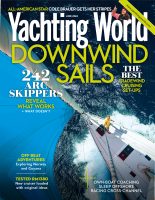
The Yachting World hall of fame: 50 yachts that changed the way we sail
- Helen Fretter
- May 13, 2020
We asked historians, round the world race winners and legendary sailors to name the yachts that changed the sport for good. In no particular order, these are the 50 yachts that shifted how we sail...

Photo: Guido Cantini / Panerai / Sea&See.com
1. Mariquita
Built: 1911 Design: William Fife III
Mariquita is a living link between the ‘Big Class’ behemoths, such as Britannia , the J Class and all that went after, including the hugely popular 12-metres. The 125ft gaff cutter was launched as part of a new 19-metre class designed to pitch matched yachts against one another.
Just four were built. Mariquita performed well, particularly in light airs. She also, uniquely, survived. Having been used as a houseboat for many years, she was discovered in the mud in 1991 and lovingly restored to relaunch in 2003, and she still races today.

Photo: Oskar Kihlborg / Volvo Ocean Race
2. ABN Amro One
Built: 2005 Design: Juan Kouyoumdjian
Two Volvo Ocean Race -winning skippers nominated Juan Kouyoumdjian’s ABN Amro One , the 5.6m beam, aggressively chined winner of the 2005-06 race. Her skipper Mike Sanderson comments: “I am biased, but I think ABN Amro One was very special and really did change people’s thinking about what made a good offshore race boat.
“As this was the first generation of Volvo 70s it was always going to be an interesting time seeing how people translated the rule,” says Sanderson. The other factor was many of the team’s involvement in Open 60 sailing.
“We very much looked at the concept of the boat differently: no spinnaker pole, furling No.4 Jibs, twin rudders, lazyjacks, snuffers on spinnakers… They all went from being equipment that was only used on single-handed boats to our team thinking it could make us faster around the world, day in day out.”
Article continues below…

Yours for €2.75 million – Mariquita, the elegant and glamorous 125ft Fife design
Not very often does a yacht come on the market that has such a storied history behind her. Marquita, the…
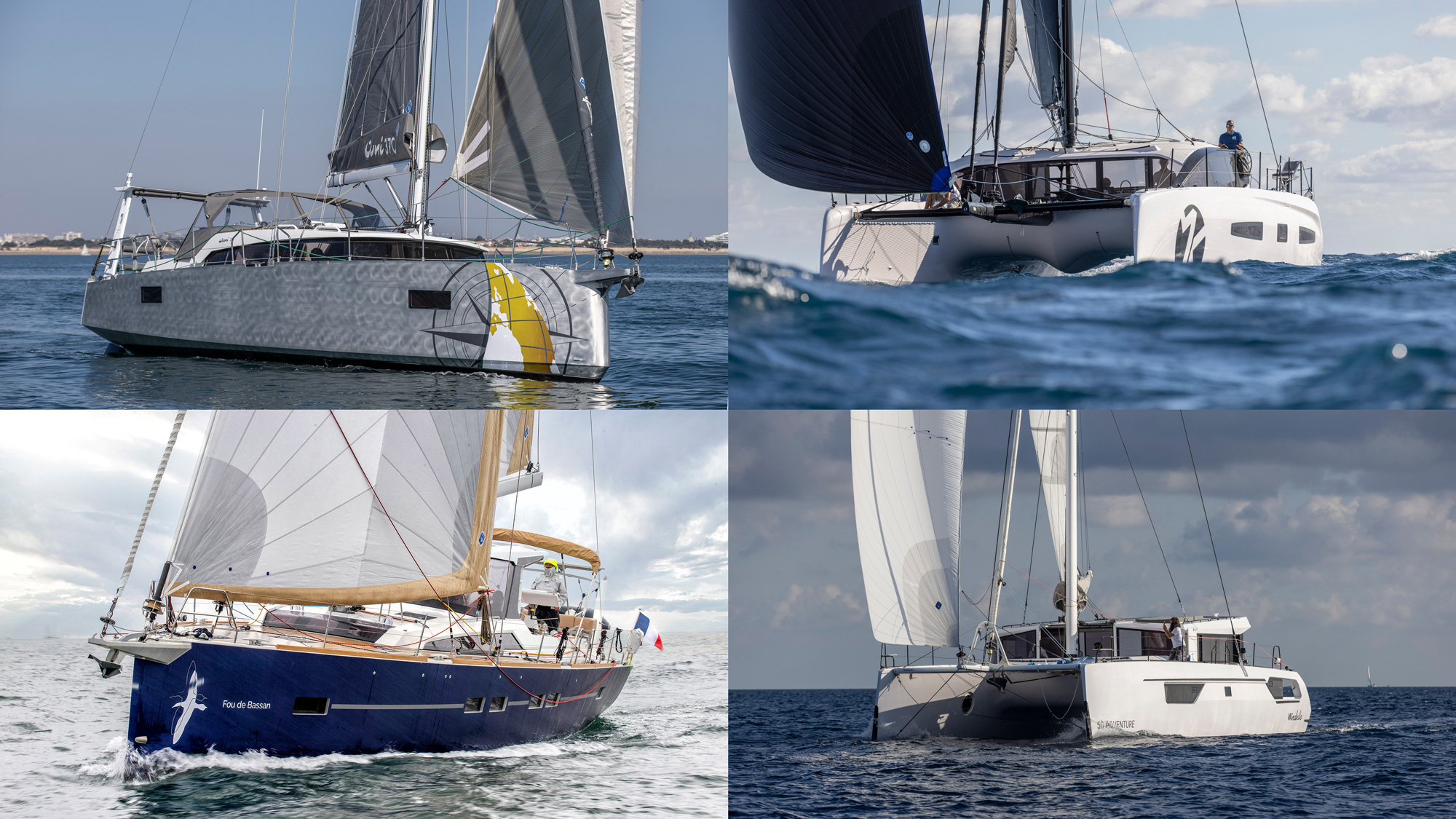
43 of the best bluewater sailboat designs of all time
Which yacht is the best for bluewater boating? This question generates even more debate among sailors than questions about what’s…
Ian Walker , winner of the 2014-15 Volvo Ocean Race, recalls: “This generation of boats smashed the previous 24-hour records and made the 600-mile day possible. ABN Amro was quite radical structurally but the key thing was she prioritised stability over anything else – such as wetted surface area.
“The Farr boats were lower wetted surface area and even started out with spinnaker poles! Asymmetric spinnakers meant sailing higher angles and more often needing righting moment.
“ABN Amro One also had twin rudders and more transom immersion, which meant it was slow in light winds but fast at high speed. There was some doubt when it was last in the first in-port races and because much of the race is in light winds, but it was so fast reaching that it negated any weaknesses.”
The black boat went on to win six of the nine offshore legs. Sanderson adds: “In all the Volvo 70s that where built – and to be honest in all the offshore boats that have followed ( Rambler , Comanche etc.) – you can see a bit of ‘Black Betty’ as we nicknamed her.”

Photo: Thierry Martinez
3. TP52 Patches
Built: 2007 Design: Reichel Pugh
Originally created to produce fast yachts for the Transpac Race, the TP52 class developed into an owner-driven inshore circuit which continues to attract the world’s best monohull sailors (these days as the Super Series). One development refined on the TP was the change to wide aft sections.
“We started off with quite narrow sterns and the working deck stopping well over one metre forward of the stern,” comments class manager Rob Weiland. “We now see an almost continuous width of the working deck from Beam Max aft and the working deck continuing to the stern.
“The ‘powerful stern’ is now the norm in offshore racing. I’m not sure whether we started it, but for sure, we were the test bed for how to refine that hull shape concept for windward leeward performance.”
First to have a working deck all the way aft was the 2007 Reichel Pugh Patches , a style then taken a stage further by ETNZ (2009), which added slab-sided topsides with a knuckle to create more hull stability when heeled. ETNZ also saw refinements in deck layout, elements of which have filtered down to more mainstream designs, such as transverse jib car tracks.

Photo: Ivor Wilkins Offshore Challenges / DPPI
4. B&Q Castorama
Built: 2004 Design: Nigel Irens
‘Mobi’, as she was affectionately known, was the 75ft trimaran designed by Nigel Irens specifically for Ellen MacArthur’s solo round the world record attempt in 2004.
B&Q Castorama was highly optimised, being longer, narrower, and with more freeboard than the ORMA 60s, reducing the risk of a pitchpole.
She was also, uniquely, custom built for a petite female skipper, with a full-scale mock up of the cockpit created at Offshore Challenges office. The trimaran took over a day off Francis Joyon’s record to finish in 71 days and 14 hours.
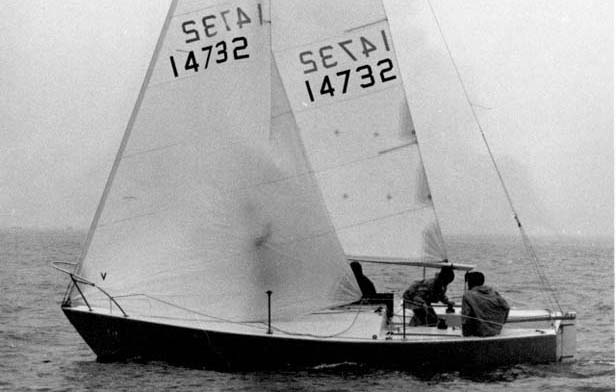
5. J/24 Ragtime
Built: 1976 Design: Rod Johnstone
It took 18 months for Rod Johnstone to build this 24-footer in his garage in Connecticut. It was designed to be simple to sail, with few rig adjustments, and light enough to be trailable. Rod’s family helped sand and finish the boat, and she was called Ragtime . Competing at their local race series in the summer of ’76, Ragtime was so successful that many people asked Rod for a sistership. He quit his job, and with brother Bob Johnstone set up J-Boats.
Their confidence proved well placed. Just two years later the J/24 class had its own one-design fleet at Key West in 1978, with 20 boats on the line. Now over 5,500 boats have been built and sold worldwide.
The J-boat line expanded to include one-designs like the J/70, as well as cruiser-racers such as the J/109. It has since has become synonymous with asymmetric sailing, doing much to popularise the use of asymmetric spinnakers on big boats.
- 1. Introduction

1550s, yeaghe "a light, fast-sailing ship," from Norwegian jaght or early Dutch jaght , both from Middle Low German jacht , shortened form of jachtschip "fast pirate ship," literally "ship for chasing," from jacht "chase," from jagen "to chase, hunt," from Old High German jagon , from Proto-Germanic *yago- , from PIE root *yek- (2) "to hunt" (source also of Hittite ekt- "hunting net"). Related: Yachting ; yachtsman .
Entries linking to yacht
Old English huntian "chase game" (transitive and intransitive), perhaps developed from hunta "hunter," and related to hentan "to seize," from Proto-Germanic *huntojan (source also of Gothic hinþan "to seize, capture," Old High German hunda "booty"), which is of uncertain origin.
Not the usual Germanic word for this, which is represented by Dutch jagen , German jagen (see yacht (n.)). General sense of "search diligently" (for anything) is recorded from c. 1200. Related: Hunted ; hunting . To hunt (something) up "search for until found" is from 1791. Parlor game hunt the slipper is attested from 1766.
also jaeger , "German sharpshooter," 1776, from German Jäger , literally "huntsman," from jagen "to hunt," from Old High German jagon , related to Old Frisian jagia , Dutch jagen "to hunt," Old Norse jaga "to drive, to move to and fro" (see yacht (n.)). Applied to riflemen and sharpshooters in the German and Austrian armies. Englished as yager , yaeger from 1804.
- See all related words ( 5 ) >
Trends of yacht
More to explore, share yacht.
updated on September 28, 2017
Trending words
- 3 . vampire
- 7 . barbecue
- 9 . integrity
- 10 . cosmetic
Dictionary entries near yacht
yadda-yadda
- English (English)
- 简体中文 (Chinese)
- Deutsch (German)
- Español (Spanish)
- Français (French)
- Italiano (Italian)
- 日本語 (Japanese)
- 한국어 (Korean)
- Português (Portuguese)
- 繁體中文 (Chinese)
Yacht Dreaming
The History of Yacht Clubs: A Deep Dive into the Origins and Evolution of this Timeless Tradition

The Birth of Yacht Clubs: How It All Began
The origin of yachting.
Boating, in general, has been around for centuries. Sailors have been traversing the high seas for as long as one can remember. However, yachting, a more leisurely version of sailing, is a relatively new phenomenon. It originated in the early 17th century when wealthy British aristocrats began to purchase and build pleasure craft for their amusement.
The Formation of the First Yacht Clubs
The first yacht club was formed in the United Kingdom in 1720. The Royal Cork Yacht Club was established by William O’Brien, the 9th Lord Inchiquin. The club was originally known as the Water Club of the Harbour of Cork and was created to organize yacht races and promote sailing among the wealthy elite. It was the first of many yacht clubs to be established throughout the world.
The Evolution of Yacht Clubs: How They Became the Social Institutions We Know Today
Yacht clubs in the 19th century.
During the 19th century, yacht clubs became social institutions that were frequented by the wealthy elite. They were no longer just places to organize races but also served as places for people to socialize and network. Yacht clubs were also used as a means of showing off one’s wealth and status.
Yacht Clubs in the 20th Century
In the 20th century, yacht clubs continued to evolve. They became more inclusive and began to welcome members from all walks of life. They also became more environmentally conscious and started to focus on promoting sustainable boating practices.
The Role of Yacht Clubs Today: A Modern-Day Perspective
Community and camaraderie.
Today, yacht clubs serve as places for boaters to come together and share their love of the water. They provide a sense of community and camaraderie that is difficult to find anywhere else. Many yacht clubs organize social events and activities, such as regattas and fishing tournaments, that bring members together.
Education and Safety
Yacht clubs also play an important role in educating boaters and promoting safety on the water. Many clubs offer sailing and boating courses, as well as safety training, to ensure that their members are knowledgeable and responsible boaters. They also provide resources, such as weather and tide information, to help boaters stay safe while out on the water.
Advocacy and Conservation
Finally, yacht clubs are important advocates for the boating community and the environment. They work to protect the rights of boaters and promote sustainable boating practices. Many clubs also participate in environmental initiatives, such as beach cleanups and habitat restoration projects, to help preserve and protect the waters that they love.
Conclusion: The Timeless Tradition of Yacht Clubs
Yacht clubs have come a long way since their humble beginnings in the 17th century. They have evolved from exclusive social clubs for the wealthy elite to inclusive community organizations that promote boating education, safety, and conservation. Today, they serve as a testament to the enduring allure of the water and the sense of community and camaraderie that it inspires.
Will Go Fishing Brainly: An Emotional Essay on the Joys and Challenges of Fishing
Fishing in Victoria: A Guide to the Best Spots and Techniques
© 2024 Yacht Dreaming

Why a yacht docked in Halifax is getting extra attention
Yachts along the Halifax Waterfront often garner attention, but one currently docked has people doing a double take.
The Samsara, which is docked near Bishop's Landing, is reportedly owned by Harry Potter author J.K. Rowling.
- The information you need to know, sent directly to you: Download the CTV News App
People were stopping by Sunday to get a look at the yacht and see if anybody was on board. Crew members could be seen at times.
According to the website ' SuperYachtFan ', the Samsara was sold to Rowling in 2023 and is valued at $150 million US.
CTV News has reached out to Rowling's PR team for more information.
For more Nova Scotia news visit our dedicated provincial page .
Atlantic top stories.

Despite soggy start to the week, Maritimes still mostly below average for June rain

NSLC made $874M in 2023-2024 fiscal year

52-year-old man dead after ATV crash near Chance Harbour, N.B.

Proposed tow truck bylaw sent back to Cape Breton Regional Municipality staff for amendments

One of Canada's most popular vehicles recalled over transmission issue; 95,000 impacted

Entangled right whale calf spotted in Gulf of St. Lawrence, DFO says

Youth turns themselves in to police after N.S. trail bridge fire

P.E.I. woman arrested after thefts, disturbances in Montague
Ctvnews.ca top stories.

BREAKING | Former Ottawa deputy police chief charged with sexual assault
Former Ottawa police deputy chief Uday Jaswal has been charged with sexual assault in connection to an incident involving a female police officer under his supervision at the time. The assault allegedly took place in the workplace.
DEVELOPING | 'This changes everything': Conservatives win Toronto byelection, beating Liberals in major upset
Conservative candidate Don Stewart winning the closely-watched Toronto-St. Paul's federal byelection, and delivering a stunning upset to Justin Trudeau's candidate Leslie Church in the long-time Liberal riding, has sent political shockwaves through both parties.
Pre-med students can't take MCAT in Quebec because of Bill 96
Areeba Ahmed says she's always dreamed of becoming a surgeon but her road to the operating room has become a complicated one ever since Quebec's French language law came into effect.
One of the country's most popular vehicles is being recalled in Canada due to a transmission issue that may impact tens of thousands of drivers.
Ottawa urges Canadians to leave Lebanon while they can due to escalating violence
Foreign Affairs Minister Melanie Joly is urging Canadians to leave an increasingly volatile Lebanon while they can.
When a mole went 'rogue,' she knew something was wrong. What followed was years of cancer 'being very sneaky'
Mary Lynn LeBlanc first noticed a mole on her left shoulder about seven years ago. At first, doctors didn't find anything worrying about it. But in 2020, she noticed it looked different and grew to the size of a nickel.
Crazy Town frontman Shifty Shellshock dead at 49
Shifty Shellshock, the frontman of the 2000s rap-rock band Crazy Town, has died. He was 49.
More than 100 people died in B.C. of accidental drowning last year: coroners data
More than 100 people died of accidental drowning in B.C. last year, with incidents most common in summer months, data from the provincial coroner shows.
'Here is what it could look like': Real estate agent uses AI to virtually stage home
Staging a home can be time consuming and expensive, but now with artificial intelligence, you can see what a home would look like renovated or with a coat of paint.
Shopping Trends
The Shopping Trends team is independent of the journalists at CTV News. We may earn a commission when you use our links to shop. Read about us.
Editor's Picks
The 5 best ice cream makers in canada in 2024, tested and reviewed, our guide to the best portable air conditioners in canada in 2024 (and where to get them), 17 stylish things from gap that’ll help you complete your summer capsule wardrobe, 19 essential products for anyone who owns a pool, we tested 17 portable grills: our top 5 in canada in 2024, the 5 best beach tents in canada, tested and reviewed, if you have no idea what to get them for their birthday, try one of these gifts, 13 brilliant budget-friendly gifts that cost less than $25, 15 of the best graduation gifts you can get online right now, if you want smooth, glowy skin, you'll want to order at least one of these 15 products, i was skeptical, but this bio-oil skincare oil is actually magic for scars and stretch marks, 10 of the best detangling brushes you can get online right now, according to reviewers, health & fitness, these natural deodorants will actually keep you smelling fresh this summer, 15 of the most comfortable camping mats you can get online right now, if you have an anxious dog, you probably need these anxiety-relief products.

124 arrests made, 177 stolen vehicles worth $10 million recovered by Ontario carjacking task force
A provincial task force charged with probing carjackings in Ontario says it has made 124 arrests and recovered 177 stolen vehicles valued at over $10 million.
'We are ready to crowdsource this': Toronto philanthropist offers $1M to help keep Ontario Science Centre open
A Toronto philanthropist is offering up $1 million to help keep the Ontario Science Centre open for the summer following the abrupt closure of the beloved North York museum last week.

Calgary mayor expects 'positive news' on water main repair timeline
Calgary Mayor Jyoti Gondek says residents came very close to the threshold water use on Monday, but that some 'positive news' is expected Tuesday afternoon about the water main repair timeline.
Section of Stoney Trail closed after man hit by vehicle
A section of Stoney Trail by the airport is closed after an incident involving a pedestrian early Tuesday morning.
Former Chestermere mayor, 3 councillors fail in bid for re-election
The City of Chestermere has a new mayor following a byelection on Monday.

What's next? Interesting off-season ahead for Oilers after Stanley Cup final loss
The Panthers will spend the summer sipping from hockey's holy grail. The Oilers, meanwhile, have plenty of questions about the future.
Panthers win their 1st Stanley Cup, top Oilers 2-1 in Game 7
The Florida Panthers are Stanley Cup champions for the first time in franchise history, defeating the Edmonton Oilers 2-1 in Game 7 of the Stanley Cup Final.
Oilers' McDavid wins Conn Smythe Trophy after Game 7 loss
Edmonton Oilers captain Connor McDavid has been awarded the Conn Smythe Trophy as the most valuable player of the NHL playoffs after an incredible post-season that finished just short of a Stanley Cup.

Alleged Montreal car thief takes off with baby onboard
A seven-month-old baby has been returned to his mother after an alleged thief stole the car he was in.
Protesters try to topple Queen Victoria statue near pro-Palestinian encampment in Montreal
Montreal police were called to intervene after protesters attempted to tear down the Queen Victoria statue at Victoria Square.
WATCH | Snowbirds and Italy's Frecce Tricolori fly over Ottawa-Gatineau
The Canadian Forces Snowbirds say the Snowbirds and Frecce Tricolori will conduct a series of flypasts over Ottawa and Gatineau at approximately 12:15 p.m.
Here's how many vehicles have been reported stolen in Ottawa in the first 6 months of 2024
More than 830 vehicles have been reported stolen in Ottawa in the first six months of 2024, with 10 per cent of all vehicle thefts in Gloucester-Southgate.

Special weather statement and wind warning in effect for the region
CTV London Meteorologist Julie Atchison said sunshine will start your Tuesday, 'A nice mix of sun and cloud, winds picking up out of the south as we head into the afternoon.'
Life-threatening injuries following south London crash
One person has been taken to hospital with life-threatening injuries after crash in south London. According to police, the crash happened in the area of Wellington Road and Commissioners Road east.
Man charged with harassment after spotted following young girls: police
A man is in custody following complaints that he was spotted following a school girl riding a bike. According to police, he was spotted driving a red Mitsubishi SUV in the area of Southcrest Drive and Base Line Road West on the afternoon of June 16.

Barrie police seek suspect wanted for possible hate crime
Images of a suspect connected to a possible hate crime were released by Barrie police this week in hopes someone will recognize him.
Bracebridge, Ont. man who lost his life trying to save another honoured posthumously
A Bracebridge man who died trying to save a distressed swimmer nearly four years ago is being recognized among 18 others for their extraordinary acts of heroism.
Former Barrie Colts captain Aaron Ekblad is a Stanley Cup Champion
Barrie's former captain of the Barrie Colts hoists the Stanley Cup after Game 7.
Northern Ontario
Another murder-suicide involving intimate partner violence in the sault.
The two bodies found at a Sault Ste. Marie home last month have been deemed a murder-suicide in another tragic case of intimate partner violence in the city, police say.
Railcars derail in remote area of northeastern Ontario
CN crews are responding to a train derailment in a remote part of northeastern Ontario on Monday.

Kitchener, Ont. family demands justice after SIU clears police in fatal shooting
The family of Kitchener, Ont. man said he was suffering from a schizophrenic episode, and desperately needed help, the night he was fatally shot by an officer with the Waterloo Regional Police Service.
Three Toronto men arrested after attempted robbery at Fairview Park Mall
Waterloo regional police have arrested three men from Toronto after an attempted robbery at a Kitchener mall.
Man dragged behind vehicle while attempting to stop theft: police
Guelph police are seeking the public’s help after a man was dragged while trying to stop a vehicle theft.

Body of missing swimmer recovered in Lake Erie
Essex OPP Marine Unit members have recovered the body of a missing swimmer.
Two vehicle collision in Thamesville leads to fatality
A collision in Thamesville led to a fatality Monday afternoon. At 4:30 p.m., on Longwoods Road between Dew Drop Road and Huff’s Side Road, a westbound vehicle veered into the oncoming lane, colliding with an eastbound vehicle.
Severe thunderstorm warning lifted
Environment Canada has lifted a severe thunderstorm warning in Windsor-Essex.

Paul Maurice, a hockey lifer, now has a Stanley Cup. And it was worth the wait
Paul Maurice was once the last player picked in the NHL draft. An afterthought, almost. He never made it to the league as a player. And there were many times when he wondered if his name would ever be on the Stanley Cup. Wonder no more.
Manitoba nursing station a total loss following fire; woman arrested for arson
The nursing station in a northern Manitoba community is a complete loss after a fire tore through the facility early Monday morning.
Two people dead in separate crashes on Manitoba highways
Two people died over the weekend following separate crashes on Manitoba highways.

Police use of force in Regina on the rise, statistics show
Regina Police Service (RPS) statistics show officer use of force is on the rise.
Enbridge partners with Six Nations Energy Development on Weyburn wind farm project
A major wind power project is planned for Weyburn, Sask. Enbridge wants to build a facility near the city in collaboration with Six Nations Energy Development LP.
Sask. speaker officially resigns from Sask. Party caucus
Speaker Randy Weekes officially tendered his resignation from the Saskatchewan Party Government Caucus – following an extended saga that saw Weekes accuse government MLAs of harassment.

Saskatoon mayoral candidate suing the city over housing accelerator fund requirements
Pressure is increasing at city hall over a looming decision on the federal housing accelerator fund.
'Like the movie Twister': Sask. town cleans up storm aftermath in wake of possible tornado
Environment Canada is investigating whether Carrot River, Sask. was hit by a tornado on Sunday night.

BC United falls to 4th place in polls, Conservatives narrow gap with NDP
With less than four months until B.C.'s provincial election, the current official opposition has fallen to fourth place, a recent poll from Research Co. revealed.
Disappearance of Burnaby, B.C., teen still a mystery 20 years later
Two decades since the disappearance of a 17-year-old boy in Metro Vancouver, police are renewing their call for information on his whereabouts.
Vancouver Island

Man stabbed in Kelowna, suspect at large: RCMP
Mounties in Kelowna say a suspect is at large after a man was stabbed in the city Sunday afternoon.
Police still investigating cause after woman found dead in Kelowna park
Police are remaining tight-lipped about a woman’s death in a Kelowna park on Friday.
Man shot dead in Princeton, B.C., was high-ranking gang member, court records suggest
Police have identified a man found dead in B.C.’s Interior last weekend as Donald “Donnie” Lyons.
Stay Connected


Forget cruising, let’s superyacht like the 1 per cent
G ood news for anyone who’s ever wanted to own a private yacht but doesn’t have a spare billion dollars, several high-end cruise companies are rolling out super yacht experiences, writes Michelle Tsea
Earlier this year, Royal Caribbean launched their Icon of the Seas, with a seven-day journey on board the world’s largest ship, 365m long and 250,800 tonnes, where more than 5000 passengers mingle on waterslides and bathe in bubbling hot Jacuzzis while sailing across the Mediterranean. With 20 decks and 20 bars and restaurants, as well as the largest waterpark at sea, the seven swimming pools and nine whirlpools cater to a large range of travellers and equally diverse budgets making the ship crowded and not everyone’s cup of tea.
As the cruising industry continues to grow more and more extravagant, over-the-top liners are built to provide travellers with superlative experiences on the water, on the other side of the spectrum, ultra-luxury ships are also being reimagined to cater to travellers who want more intimate experiences when sailing. For travellers who prefer not to fight for a deck chair when cruising, smaller ships are becoming more popular with the “superyachts-style” cruising where the privacy of a smaller ship is offered to those who want a less “party” scene when on water. The Somnio is one of the latest superyachts setting sail this year and offering 39 spacious private apartments for residents who have the ability to fork out a cool US$11.3 million ($18.3m) to sail the globe.
Despite a double-digit superyacht being quite cheap when compared to purchasing your own liner (prices start at $275 million these days), not many of us can still afford a shared residency on a boat … until now.
Although very few of us have a few million sitting in our bank accounts, cruising enthusiasts who have always dreamt of owning their own private yacht will soon be able to enjoy what the 1 per cent experience. As companies such as Scenic, Seabourne and MSC continue to vie for the attention of travellers, cruising is about to become more luxurious for the everyday traveller with companies mirroring what an experience on a superyacht would feel like with more curated on-board experiences, tailored off-shore excursions to remote destinations and also the “small-ship” feeling with premium services and space for guests to enjoy.
The past few years have seen cruise lines launch a slew of yacht-like experiences. Scenic Group launched Emerald Azzurra and will follow it up with Emerald Sakara due to the immense popularity of its first ship; rival Ponant continues to entice with intimate experiences on their Explorer ships with just 92 all-balcony suites offering a chic Scandi-style of living and SeaDream Yacht Club is unapologetically for yachters with their “it’s yachting, not cruising” experience, boasting access to some of the most exclusive yachting harbours around the world.
The trend for super-yachting and not cruising has sent waves around the cruising industry, so much so, hospitality brands are also stepping in on the action and launching their own super-yacht cum cruising experiences. Well-known hospitality brand, Ritz-Carlton launched their own yacht collection a couple of years ago and rivals, Aman and Four Seasons will roll out their own fleets in the next few years with the same luxury hotel feel but on water.
While many cruising experts have reviewed and enjoyed the intimate and high-design cabins, some do argue that it is just a five-star hotel at sea which begs the question - are these fancy “superyachts” worth the price tag? Ritz Carlton starts at approximately $10,000 a week and Scenic superyachts will set cruisers back close to $16,000 for their yachting experience - perhaps a small price to pay for a week of luxury.
While some serious cruisers will scoff at the overpriced cruising experience and others will continue to marvel at having a more intimate experience at sea without forking out a few million for their own private yacht, it seems that this is more than just a trend but a lifestyle that all of us can now enjoy. If you are curious about what a superyacht cruise feels like, here are the ones to check out.
Launched last summer, Explora I was the first ship by MSC Cruises (yes, the same company that produces the World Europa mega-ship for 7000 passengers) and another five ships will follow by 2028, including Explora II which was launched this year. Alexa Aponte Vago, the founder of Explora says that yachting and five-star elegance like those found in a luxury hotel were pillars when designing the ship, “We always had in mind the atmosphere of a private yacht, creating relaxing experiences that you can only have if you are on your own yacht - floating home,” says Vago. The “experiences” that Vago refers to include “off-the-beaten-path encounters‘, like truffle hunting in Istria, Croatia; enjoying a hammam in a historical palace in Morocco, and sipping wine in Mykonos, Greece. Around the ship, guests can enjoy floor-to-ceiling windows and a private sun terrace in the suites, as well as an expansive wellness centre for high-tech treatments like cryotherapy, as well as 18 dining options, including Michelin-approved menus.
explorajourneys.com/at/en
Seabourn Pursuit
Seabourn, a firm favourite for luxury cruising launched the first ultra-luxury ship, Seabourn Venture in 2022 and then followed it up a year later with the ever-so-stylish Pursuit fleet. Promoted as a “sophisticated and luxurious small ship cruise”, only ocean-front suites are on offer here, as well as pool-side neck massages for passengers as they sail swiftly towards the Norwegian Fjords. Guests are treated like VIPs and passengers can expect an open-bar policy serving premium wine, champagne and spirits, restaurants helmed by 3-Michelin star chef Thomas Keller and access to some high-tech toys like six-person submarines, kayaks and zodiacs. If you are looking to get-up-close-and-personal to wildlife, there are remote adventures ashore too, which include: New Guinea, Indonesia and also the Kimberly in Australia as the most popular destinations. On deck, there are craft cocktail master classes and an outdoor Sky Bar for unlimited Happy Hours.
seabourn.com/en/au/cruise-ships/seabourn-pursuit/1
Virgin Voyages
If you are contemplating whether or not a superyacht cruise is for you - perhaps consider Virgin Voyages. The adult-only cruise is inspired by a superyacht design and that’s the only thing that resembles the yachting experience so you will experience all the same great things as if you were on a luxury cruise liner. Perks include mermaid-inspired spas, contemporary public areas and tech-savvy suites equipped with in-cabin tablets and a Sailor App for bookings onboard. For foodies, there are six signature restaurants including Korean barbecue and even Michelin-star dining experiences. Resilient Lady was launched from Greece last year and Brilliant Lady will set sail later this year in 2024 and travel to New York City, Boston and the Dutch Caribbean before finally reaching Alaska.
virginvoyages.com
Silversea Silver Origin
If you are looking for the latest exclusive itinerary by the award-winning Silversea cruise line, you have to book yourself a suite on the 100-guest Silver Origin and explore the Galapagos region in true “yachting” fashion. Some of the perks to look forward to include the highest crew-to-guest ratio, eight zodiacs for extraordinary adventures, including having your very own team of Ecuadorian national experts guiding you to remote parts of the Galapagos islands. Like other ultra-luxury cruise ships, there are only suites available with horizon balconies and butler services too. For the sustainable traveller, this is the most environmentally conscious ship built by Silversea and all organic waste is transported out of the islands to be recycled to protect the Unesco-designated World Heritage Site.
silversea.com/ships/silver-origin.html
Ponant prides itself as being a smaller but elegant cruise ship for discerning cruisers but the explorer ships are definitely more yacht-like than the other fleets they have.
Many guests rave about the innovative Blue Eye Lounge, which feels like a supermarine with two oversized portholes reinforced with 18 layers of glass for passengers to look into the blue sea without goggles or an oxygen tank. There are only two restaurants on each Explora, which can be a little too small for some cruisers, but it definitely gives passengers a taste of what a superyacht would feel like with limited but well-thoughout dining options.
You can also try Le Ponant, a three-masted French sailing ship with only 16 cabins and suites.
au.ponant.com/the-ponant-fleet
Four Seasons
If you need a couple of years to save up for your first superyacht-cruise experience, make it a good one and go for a Four Seasons yacht. Rather than calling it “yacht-like”, the Four Seasons are in fact, building luxurious yachts with the same classy and luxurious amenities and services you can expect to find in one of their 100-strong hotels around the world. With 95 suites per yacht, floor-to-ceiling windows and private terrace, the swimming pool will apparently be one of the largest ever to sail across the ocean. Launching in 2026, it will give many of us some time before we take the plunge and book ourselves this highly exciting yacht that will take travellers to Nevis, Curacao and Martinique. Other perks to help you justify the costs include a whole range of water toys like a sea limousine for excursions.
fourseasonsyachts.com


IMAGES
VIDEO
COMMENTS
A yacht (/ j ɒ t /) is a sailing ... History. The history of pleasure boats begins with rowed craft in Pharaonic Egyptian times, and other vessels in the waters of Burma, India, Mindanao and Japan. Anglo-Saxon royal pleg-scips (play ships) of the 8th-century featured ornamented bows and sterns and had the capability of cooking on board.
A yacht race on lake Päijänne in Jyväskylä, Finland Cabo San Lucas Race Start 2013 History. The history of sailing dates back to prehistoric times but the racing of sailing boats is believed to have started in the Netherlands some time in the 17th century. Soon, in England, custom-built racing "yachts" began to emerge.In 1851, the Royal Yacht Squadron in Cowes challenged the American yacht ...
The yacht is an invention of the 14th century Dutch. The Dutch used small, fast boats for chasing smugglers, pirates and criminals. Rich ship owners and merchants began using these small " jaghts " to sail out to celebrate their returning merchant ships. It quickly became chic to use these " jaghts " to take friends out just for pleasure.
Yachting is a popular and luxurious activity enjoyed by many around the world. The history of yachting dates back to ancient times, and over the centuries, it has evolved into the modern-day sport and pastime that we know today. In this article, we will take a closer look at the history of yachting and how it has evolved over the years. Ancient Times Yachting can be traced back to ancient ...
The Golden Age in yachting history. The 17th and 18th centuries marked the Golden Age of Sailing, and racing became a popular pastime among the European elite. The sport of yacht racing was born, characterized by sleek and nimble vessels that competed for glory on the open water. The development of racing rules and the formalization of yacht ...
Yachting's history dates back thousands of years. For example, Cleopatra's opulent yacht was adorned with gold and jewels - a sign of ancient civilizations' luxury sailing. Modern yacht innovations keep changing marine industry. New advancements in design, comfort, and performance make yachting exciting for adventurers and pleasure seekers.
Its collections represent the fabric of yachting history-wooden binnacles, fiberglass hull sections, canvas sails, titanium booms, bronze fittings, and of course, silver trophies. Three happy circumstances make the Museum of Yachting a special place: its spectacular location, its fascinating collection, and the opportunity to watch boatbuilders ...
The world of yacht archaeology is a captivating realm that unveils the mysteries of ancient seafaring and maritime history.Yacht archaeology focuses on the study of historical yachts and the exploration of their remains, shedding light on the evolution of yachting and its place in human civilization. It offers a unique perspective on the fascinating history of seafaring cultures and their ...
9 The Enthusiastic Adoption of Yachting by the Mercantile and Professional Classes after 1870 Part Two: A Philosophy of Yachting for the New Men; 10 The Golden Age of Yachting, 1880-1900 Part One: The Rich; 11 The Golden Age of Yachting, 1880-1900 Part Two: Small Boats and Women Sailors; 12 Between the Wars
EARLY AMERICAN YACHTING. Yachting, or sailing for recreational purposes, can be traced in the United States to George Crowninshield of Salem, Massachusetts. sailed between American and European ports during the early days of the Republic. George built Jefferson in 1801, a 22-ton sloop which he used for pleasure sailing along the New England ...
The history of yachting is fascinating. First invented in the 14 th century, the Dutch used fast and small boats for chasing criminals and pirates. Their sole purpose was to navigate quickly on waters. However, rich owners and merchants began using these yachts for personal use to travel overseas as a quick mode of transport.
The New York Yacht Club (NYYC) began in 1844 and the first racing schooner, the 30.78 metre America sailed across the Atlantic. She was turned down from the races in England, but joined in a race around the Isle of Wight with 14 yachts from the Royal Yacht Squadron, winning the Hundred Guinea Cup, known today as America's Cup.
Yachting origins. Sailing has been around since some of the world's earliest civilizations. Egyptians back in 3,000 BC used to build impressive boats to place next to royal bodies to carry them to the afterlife. In the 14th century, the world's first yachts came about, also because of royals. ...
Today, ships, boats, and yachts are built using advanced technology and materials, differing greatly from those that have been used throughout history. Timeline of Ships, Boats, and Yachts. 4000 BC: The ancient Egyptians used reeds to build what are thought to be the first sailing boats in the world. The reed boats had sails and a mast and were ...
The world of yachting and sailing is a realm of elegance, adventure, and rich history. However, the terminology surrounding these nautical activities can sometimes be confusing. From the definition of a yacht to the spelling of various sailing-related terms, this article sets out to demystify the language of the seas, offering insight into the ...
Cockpit of classic racing yacht, Moonbeam of Fife, under sail in 2008 A sailing yacht (US ship prefixes SY or S/Y), is a leisure craft that uses sails as its primary means of propulsion. A yacht may be a sail or power vessel used for pleasure, cruising, or racing. There is no standard definition, so the term applies here to sailing vessels that have a cabin with amenities that accommodate ...
We'll delve into how Dutch shipbuilders and explorers played a pivotal role in shaping the yacht industry. The Golden Age of Yachting . Yachting isn't just about boats; it's a cultural phenomenon with a rich history. During the 19th century, the "Golden Age of Yachting" saw a surge in yacht building and racing. We'll explore this period and its ...
Book/Printed Material The history of yachting, 1600-1815, The history of yachting, 1600-1815, View 520 images in sequence. [ Copy 1 ]
The Oxford Dictionary explains the origins of yacht as 'mid 16th cent.: from early modern Dutch jaghte, from jaghtschip 'fast pirate ship', from jag(h)t 'hunting' + schip 'ship''. The bitter end. The Bitt is a cleat or post on the deck of a ship, for fastening lines. When a line or chain is played out to the bitter end, it means ...
I looked up the origin of the word yacht, and it said it is a mid 16th century, Early Modern Dutch word from 'jaght,' from 'jaghtschip' meaning "fast pirate ship," from 'jaght' which means "hunting" + 'schip' meaning "ship". I like the story of King Charles. It makes sense that that is why a yacht has the definite ...
In no particular order, these are the 50 yachts that shifted how we sail... 1. Mariquita. Mariquita is a living link between the 'Big Class' behemoths, such as Britannia, the J Class and all ...
Old English huntian "chase game" (transitive and intransitive), perhaps developed from hunta "hunter," and related to hentan "to seize," from Proto-Germanic *huntojan (source also of Gothic hinþan "to seize, capture," Old High German hunda "booty"), which is of uncertain origin.. Not the usual Germanic word for this, which is represented by Dutch jagen, German jagen (see yacht (n.)).
The Origin of Yachting. Boating, in general, has been around for centuries. Sailors have been traversing the high seas for as long as one can remember. However, yachting, a more leisurely version of sailing, is a relatively new phenomenon. It originated in the early 17th century when wealthy British aristocrats began to purchase and build ...
The Florida Panthers are Stanley Cup champions for the first time in franchise history, defeating the Edmonton Oilers 2-1 in Game 7 of the Stanley Cup Final. Oilers' captain Connor McDavid won the ...
The past few years have seen cruise lines launch a slew of yacht-like experiences. Scenic Group launched Emerald Azzurra and will follow it up with Emerald Sakara due to the immense popularity of ...